




This issue features a range of transformative advancements and strategic insights from industry leaders. A key highlight is our exclusive interview with Ralf Jacob, Executive Vice President of TelevisaUnivision. Mr. Jacob provides an in-depth look at the company’s strategic overhaul towards IP-based technologies and cloud integration. This significant transition is poised to enhance operational efficiency and scalability while improving content delivery across platforms, showcasing a pioneering move in the broadcasting landscape.
Furthermore, we provide our readers with an exclusive insight into the creative world of Lola Post Production, through a detailed conversation with founder Rob Harvey. Learn how this London-based visual effects boutique, renowned for its work on highprofile projects like ‘Gladiator’ and the BBC’s ‘Walking With Dinosaurs’ revival, continues to lead the VFX industry in innovation. Harvey provides insights on integrating advanced technologies like Unreal Engine into their workflow, which has significantly elevated their production capabilities.
Editor in chief
Javier de Martín editor@tmbroadcast.com
Key account manager
Patricia Pérez ppt@tmbroadcast.com
Editorial staff press@tmbroadcast.com
We also examine the latest developments in remote production technology with NEP Group’s innovative Total Facility Control (TFC) solution, which has transformed the way sports broadcasting is managed. This feature demonstrates how TFC streamlines the intricate processes of IP configuration, a crucial aspect for live sporting events such as Formula 1 or the Sweden Hockey League tournament.
As the reader turns these pages, they will find a variety of stories, each offering a unique perspective on the challenges and opportunities shaping our industry today.
TM Broadcast International is committed to providing the industry with the most relevant and inspiring content in broadcast and media, including cutting-edge technology, strategic industry shifts, and creative excellence. Join us on this journey to explore how these developments not only respond to current demands but also shape future trends.
As we enter a new summer season, which will be full of sports and major games, including the Olympic Games in Paris, we will examine how these developments are influencing the industry.
Creative Direction
Mercedes González mercedes.gonzalez@tmbroadcast.com
Administration
Laura de Diego administration@tmbroadcast.com
Published in Spain
ISSN: 2659-5966
TM Broadcast International #130 June 2024
TM Broadcast International is a magazine published by Daró Media Group SL Centro Empresarial Tartessos Calle Pollensa 2, oficina 14 28290 Las Rozas (Madrid), Spain Phone +34 91 640 46 43
In an insightful interview with Ralf Jacob, Executive Vice President of TelevisaUnivision, we explore the transformative journey the company is taking to revolutionize its broadcasting and content delivery systems.
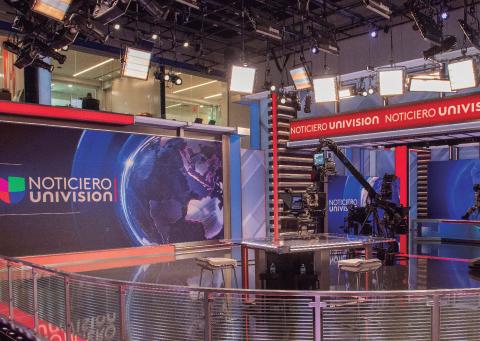
Boosting remote production for seamless sports broadcasting
That necessity sharpens ingenuity is nothing new: in fact, this saying concentrates the essence of engineering: finding the best solution for each problem, using resources as efficiently as possible.


POST PRODUCTION | LOLA
Lola Post Production, a pioneering visual effects (VFX) boutique based in London, was founded in 2000 by acclaimed VFX supervisor Rob Harvey. With a rich history that includes work on Ridley Scott’s “Gladiator,” Harvey and his team have built a reputation for delivering high-end, award-winning visual effects for film and television.

TEST ZONE | PTZ EXPLORE SE AND PTZ CONTROLLER V-JOY
PTZ ProAV and Broadcast solution for live productions and immersive VR
Lab test conducted by Carlos Medina, Expert and Advisor in Audiovisual Technology
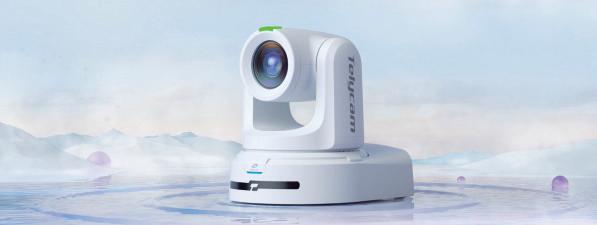

Vizrt introduces Viz Connect Tetra, an innovative live production workstation. This ultra-compact device facilitates multi-channel 4K video and audio connectivity globally, with a straightforward internet or network connection.
“Leveraging live production has traditionally necessitated various video converters and software platforms, leading to workflow complexities. Viz Connect Tetra streamlines this process by consolidating all requirements for remote live contribution into one device, thereby transforming workflow efficiency, scalability, and stability for live productions,” says Liam Hayter, Product Manager at Vizrt.
Streamlining video and audio conversion, anywhere
In the company’s words, Viz Connect Tetra meets the evolving demands of multi-camera, onlocation, live productions with its four flexible channels supporting up to 4K resolution without compromises. These channels offer versatility, functioning as up to 12G NDI to SDI, 12G SDI to NDI, or NDI to NDI converters, seamlessly transitioning from a server room rack to a portable desk setup, catering to various connection needs.
The built-in white balance and color correction tools on Tetra enable crucial quality adjustments directly at the conversion point. Besides, audio flexibility reaches new heights with Viz Connect
Tetra, supporting NDI®, SDI, ASIO, and WDM virtual SoundCards.
For the first time in a Vizrt product, each of the four IO channels supports 16×16 audio routing for on-the-go patching, facilitating swift responses to live production requirements.
Simplified Cloud access with NDI 6
Featuring access to NDI Bridge join-mode in its user interface, Viz Connect Tetra allows seamless sending and receiving of NDI for remote production worldwide. Utilizing NDI Bridge on Viz Connect Tetra, users can effortlessly enable production capabilities for cloud and remote productions without additional hardware.
Seamlessly integrating with TriCaster, Vizrt graphics solutions, and other NDI and SDI live production systems, Viz Connect Tetra operates on-premises or in the cloud from any location globally.
NDI Bridge’s built-in encoding capabilities offer users a choice between NDI High Bandwidth or NDI HX with bandwidth control, accommodating various connectivity constraints.
With NDI Bridge Join mode, Viz Connect Tetra systems securely link to NDI® Bridge Hosts worldwide, enabling bidirectional content sharing and contribution between locations with internet or WAN access.
“Video productions thrive on collaboration. Viz Connect Tetra
enables remote content creators to securely connect, expand their sources, and establish a private peer-to-peer content network. It seamlessly integrates video and audio feeds from different locations into a single NDI or SDI live production environment via an NDI Bridge Host in the data center,” Hayter emphasizes.
HTML 5 graphics support
Viz Connect Tetra bridges the gap between HTML 5 Graphics tools, Traditional SDI infrastructure, and NDI® IP technology. Additionally, it is the first multi-channel conversion solution supporting Viz Flowics and HTML 5 graphics independently of TriCaster, converting HTML5 outputs into NDI and up to two key and fill pairs for baseband SDI workflows.
Enabling remote post-production pipelines
With seamless connectivity to numerous post-production tools, Viz Connect Tetra facilitates access to flexible, cloud-based, and remote production environments.
In conclusion, according to the company statements, Viz Connect Tetra’s compact footprint with 12G 4K UHD output, coupled with the secure encryption workflow provided by NDI® Bridge, makes it a great option as desktop companion for post-production professionals to deliver program output to broadcast-grade displays, regardless of their location, even when operating via remote desktop systems miles away.



The tech firm has presented the latest flagship model of the Micro Four Thirds mirrorless Lumix G Series, the Lumix GH7
Boasting high video performance and a wide dynamic range, the GH7 features a newly developed 25.2MP BSI CMOS sensor and enhanced AF performance with PDAF (Phase Detection Auto-Focus). Catering to the demanding needs of professional production environments, the GH7 now comes equipped with internal recording of Apple ProRes RAW and the world’s first 32-bit float recording, eliminating the hassle of adjusting sound recording levels during shooting.
With the escalating demand for video content in recent times, there has been a surge in small teams of video creators seeking further advancements in mirrorless cameras that offer superior video performance and portability. Since its inception in 2009, and according to the company statements, Panasonic’s Lumix GH series has garnered a strong reputation among creators and video production teams for its shooting prowess, innovative features, and reliability.
The Lumix GH7 emerges as a next-generation mirrorless camera designed to meet the diverse needs of creators across various creative fields, and it’s slated to hit the market at the end of July 2024.

According to the company, these are the new Lumix GH7 key features:


High performance, swift response, and great mobility
• 25.2MP BSI CMOS sensor delivers high resolution and rapid response, coupled with a 13+ stop dynamic range for rich gradation.
• Incorporates PDAF for high-speed, precise AF performance, alongside real-time auto-focus recognition AF for airplanes and trains.
• Enhanced image stabilization technology includes perspective distortion correction for videos and High mode in Active I.S. for robust compensation while shooting on the go.
Video quality and streamlined workflows from capture to post-production
• Internal recording capabilities of 5.7K 30p ProRes 422 HQ and ProRes RAW HQ.
• Introduction of the world’s first 32-bit float recording, eliminating the need for audio recording level adjustments during shooting when using the new XLR microphone adapter, DMW-XLR2 (available separately at the end of July 2024).

• Allows users to import original LUT files and apply new color looks directly to videos and photos with Real Time Lut.
• Facilitates proxy recording for enhanced workflow efficiency and supports native Camera to Cloud integration with Adobe’s Frame.io, enabling automatic uploading, backup, sharing, and collaborative work via the cloud.
• Open Gate recording enables flexible framing for any social media platform or client requirements.
Reliability in the video production arena
• Enables unlimited video recording through efficient heat dissipation processing and integration of a cooling fan.
• Features a convenient tilt-free angle monitor that does not interfere with HDMI or USB cables when tilted.
• Designed to withstand harsh environments with dust, splash resistance, and freeze-resistance down to -10 degrees Celsius/14 degrees Fahrenheit.
Vislink Technologies has rolled out its latest offering, the INCAM-GV RF and 5G wireless transmitters, designed specifically for Grass Valley’s new LDX 135 RF and LDX 150 RF cameras. This release signifies a significant stride in live production technology, promising broadcasters unmatched production freedom, flexibility, and image excellence.
Tailored to complement Grass Valley’s LDX 100 Series live production cameras, the INCAM-GV stands out as a fully integrated HEVC 4K UHD, HDRready wireless system. Available in both RF and 5G versions, this transmitter ensures top-notch broadcast quality encoding across various formats, including 4K UHD, 1080p, 1080i, and 720p, while maintaining camera control. This integration not only facilitates wireless transmission but also guarantees the delivery of high-caliber, immersive viewing experiences to audiences.
Michel Bais, Chief Product Officer of Vislink, stated:
“The INCAM-GV represents a significant leap forward in our partnership with Grass Valley. This transmitter not only meets but exceeds the demands of modern live production, offering unprecedented wireless transmission robustness and image quality. Our goal is to empower broadcasters to deliver content in ways that were previously unimaginable.”
Unveiled at NAB 2024, Grass Valley’s LDX 135 RF and LDX 150 RF cameras inherit the advanced camera technology of their non-RF counterparts, now complemented with integrated wireless transmission capabilities. Leveraging HEVC video coding technology, the INCAM-GV enables broadcast organizations to deliver high-quality images over reduced RF bandwidth or longer distances.
Klaus Weber, Director of Product Marketing at Grass Valley, added: “The incorporation of Vislink’s INCAM-GV 5G and RF wireless transmitters for our LDX 135 RF and LDX 150 RF cameras offers our customers a seamless, cable-free experience without compromising on the exceptional
picture quality Grass Valley is known for. This integration is a testament to our dedication to innovation in the media and entertainment industry.”
According to the specifications provided by the company, the features of the INCAM-GV include:
• Full Compatibility: Designed to seamlessly integrate with the LDX 135 RF and LDX 150 RF cameras.
• Licensable Frequency Bands: Offers flexibility for on-the-fly adjustments to transmission settings.
• High Efficiency Video Coding (HEVC): Ensures superior image quality while reducing bandwidth usage.
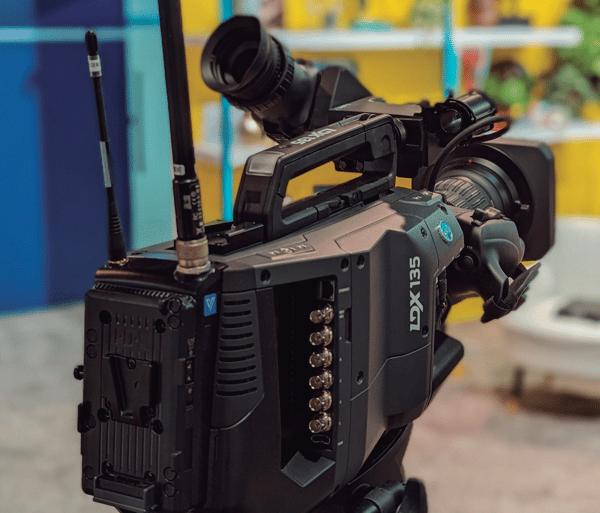


Telemetrics’ new RCCP-M2 robotic camera control panel offers a full slate of valuable features in a compact, highly portable form factor (about the size of a laptop). And it can be dropped into any existing production workflow and instantly control any PTZ camera on the market in addition to the full line of Telemetrics Pan/Tit Heads.
The RCCP-M2 offers an intuitive and easy to use control interface with advanced auto-sensing technology that’s perfect for non-technical staff working on a wide variety of cost-conscious productions.
Previously users needed an extra sidecar joystick for operating a Telemetrics TG-4/5 trolley and a Televator elevation column. Now there’s an integrated joystick castle knob that offers the same functionality in a smaller form




factor (about the size of a laptop) that’s much easier to use.
Other features of the new control panel are two rows of programmable TeleKeys, a 10.5 touch screen interface for full camera image controls and scene presets, one Joystick controller for pan/tilt/zoom camera movements, and two encoder knobs with LED rings around the knobs that can change colors to make them easy to locate in a dark environment like a control room. One knob could be selectable for camera controls while the other used for focusing the camera.
The panel’s touchscreen is mounted an articulating arm, making it adjustable for different operator preferences.
While the new panel is smaller, it packs the same punch as its predecessor in terms of robotic
camera control features. In fact, it’s running the same RCCP series Base software so all features are the same as those found on the original RCCP-M. This includes support for up to eight robotic cameras, over 10,000 presets over IP, video router control, Motion record, Auto-sense device detection and a Perspective View feature that allows for simplified preset recall.
Perspective View gives users a bird’s eye view of the room and its various participants, thus eliminating the struggle with difficult-to-remember presets. The operator can load an image into the panel providing independent Perspective views for each camera that clearly show how the production will look. This innovative Perspective View also makes it easier for church volunteers and less skilled operators because they don’t have to necessarily know what camera they want to operate. They simply use the RCCP-M2’s graphical user interface to click on an image and go live with each camera position.
The Telemetrics RCCP-M2 offers full support and connectivity for robotically controlled PTZ systems from Telemetrics, Panasonic, Sony, Canon, and others. It is also compatible with Broadcast cameras from Grass Valley, Hitachi, Ikegami, JVC, Panasonic, and Sony, when using Telemetrics robotics.
Mediaset has revamped its workflow through a collaborative effort with technology partners. Operating on an advertisementbased model, The broadcaster company manages 13 FTA channels (free-to-air) along with an on-demand streaming platform named Mediaset Infinity.
Recognized for its adeptness in adopting and leveraging new technologies, Mediaset has focused on refining its OTT headend, a pivotal component in the video streaming workflow responsible for encoding, packaging, distribution, and monitoring. On the other hand, Video Progetti, Unified Streaming’s software reseller in Italy since 2022, has played a significant role in optimizing Mediaset’s workflow, particularly in enhancing its OTT headend.
Mediaset tasked Video Progetti with implementing its first entirely cloud-based OTT headend system. The primary objective was to achieve top-notch quality, operational flexibility, and reliability, especially considering Mediaset’s acquisition of Champions League broadcasting rights.
With premium football content in their lineup, the Italian broadcaster aimed to elevate service quality further, including the delivery of native 1080p/50fps video to a broader range of end-user devices. Future-proofing the workflow and meeting SMPTE IP2110 infrastructure compatibility requirements were also essential.
A collaborative effort between Mediaset and Video Progetti’s technical team ensued. Video Progetti proposed a solution based on integrating leading brands in the market, ensuring independence, modularity, and freedom from vendor lock-in.
The selected products, each excelling in their respective fields, formed a robust lineup.
Unified Origin from Unified Streaming was chosen for packetizing streams according to end device requirements, with a just-in-time approach. The streaming solution also handled DRM and encryption, critical for delivering Mediaset’s platform services securely. In addition, and to enhance workflow resilience, Unified Origin was deployed with full redundancy.
According to developers and clients, the new OTT service not only went live smoothly but also surpassed Mediaset’s expectations.
Sales Director of Video Progetti Francesco Struzzi said, “The collaboration with Unified
Streaming on the Mediaset OTT project was optimal. Unified supported the project in a very professional way, and helped with the integration of Unified Origin in a complex workflow with Elemental encoders. We are very happy with the end result and look forward to collaborating with Unified Streaming in new projects.”
Streaming Solutions Architect at Unified Streaming Giacomo Benelli said, “Working with Video Progetti, and helping achieve such a clear victory in the Mediaset OTT project, was fantastic. We were able to provide tech support and best practices to leverage Origin capabilities for efficient delivery of restart-live URLs. Also, working alongside Video Progetti, we ensured that Mediaset received a bespoke DASH manifest manipulation to support the live restart logic of some players.”
As a conclusion, the three companies stated that the partnership between Mediaset, Video Progetti, and Unified Streaming has resulted in a robust, high-quality OTT streaming solution, setting new standards in the broadcasting industry.


In a move to bolster its broadcasting capabilities, Melinda FM, nestled in the coastal town of Middelkerke in West Flanders, Belgium, has recently upgraded its mobile radio studio with the cutting-edge Lawo Crystal broadcast console. Spearheading this transformative endeavor was Aircast, an independent broadcast equipment supplier and subsidiary of Lambda Technologies, an antenna manufacturer.
“Recognizing the imminent challenges ahead and aiming to elevate our everyday broadcasts and special events for years to come, we set out to acquire a new, mobile radio studio,” reveals Chris Schoutteet, Chairman of Melinda FM. “Investing in stateof-the-art technology is pivotal for us to explore innovative ways of crafting informative and captivating programs, which are essential for retaining our loyal audience,” he emphasizes.
Reflecting on the collaboration, Tommy Degraeve, Media Solution
Manager at Aircast, remarks, “When Melinda FM, a valued long-term partner, approached us to upgrade their mobile studio, we meticulously assessed their needs. Together, we scoured the market for a solution that best aligned with the radio station’s requirements for streamlined workflows, system adaptability, and future scalability. After thorough evaluation, we zeroed in on the Lawo crystal broadcast console.”
Schoutteet elaborates, “Our quest was for a versatile mixing system with expandability options, allowing us to incorporate features like extended listener participation via telephone or voice-over-IP connections. With the crystal console, albeit at a slightly higher initial cost, we now possess a system tailor-made to our specifications—reliable, of top-notch quality, and primed for expansion, thus future-proofing our operations. Testimonials from prominent broadcasters further affirmed our decision.”
The Lawo crystal mixing console is engineered for both broadcast and pro-audio applications. It harnesses the Power Core, Lawo’s compact 1RU Software-Defined DSP Mixing Engine, and Modular I/O Device, ensuring seamless integration of various signal formats such as RAVENNA/AES67, MADI, Dante, AES3, and analog, thereby future-proofing broadcast operations. Notable features include AutoMix, which maintains
multi-mic production balance, and AutoGain, streamlining mic level optimization with a single button press. The console’s ability to store and recall an unlimited number of snapshots and DSP profiles facilitates customized show setups and individual talent profiles accessible from any networked console, supporting remote operations and OB setups.
Melinda FM’s maiden event utilizing the Lawo crystal was a live broadcast from the five-day Sluze Kermesse (ship-lock fair) in Middelkerke during the extended Pentecost weekend. The event was a resounding success, featuring live interviews and seamlessly mixed music on-site via the crystal console. “It’s gratifying to showcase the potential of local radio,” Schoutteet expresses. “Our mobile studio now empowers us to deliver music and engaging conversations directly to the community, fostering vital connections with our audience.”
Reflecting on the event, Schoutteet concludes, “The experience garnered reaffirms our decision. The intuitive operation, plethora of assistive mixing technologies, and workflow flexibility enable our operators to craft compelling, immersive programming. We’ve only scratched the surface of the possibilities this new console offers, and it’s exciting to explore its full potential in the weeks ahead.”
• ORS, Austria’s national broadcast network operator, has launched the latest simpliTV app for Hisense smart TVs, powered by VIDAA OS, developed and delivered by their long-term core technology partner, 3SS
• The new simpliTV Highlight Feature – a Replay Service allows viewers to replay game highlights during or after a live match, catering especially to football fans
• The app was developed and launched remarkably quickly, under three months from initiation to certification, aligning with ORS’ goal of completion prior to the European football championship
3 Screen Solutions (3SS), a leading provider of software solutions for set-top boxes (STB), smart TV, multiscreen, and in-vehicle entertainment, announces the successful launch of Austria’s national broadcast network operator ORS’ super-aggregated multiscreen simpliTV service on Hisense smart TVs. The app is powered by the emerging VIDAA operating system.
ORS has continued its partnership with 3SS, a longterm core technology partner, to deliver this significant service enhancement, as well as to introduce a new UX innovation tailored for football enthusiasts.
ORS has unveiled the Highlight Feature – a Replay Service, enabling users to revisit game highlights while the match is still in progress or afterward. This innovation is expected to particularly resonate with groups of friends watching the game together. This new addition is available to all simpliTV users for a two-month promotional period on various simpliTV receiving devices, including hybrid STBs, Samsung, LG, and Android smart TVs. The project delivery was expedited, with the smart TV app launched in less than three months from initiation, including certification. The critical objective of the project, a fundamental requirement for ORS, was to complete it in time for the European football tournament, which takes place from June 14 to July 14, 2024, in Germany, with Hisense being an official gold sponsor.
“ORS, Hisense, VIDAA, and 3SS worked closely together with a high level of communication and responsiveness. With 3SS as the prime integrator and a shared focus among the partners, these innovations were delivered with the highest quality and in time for the European football championship. We thank everyone involved,” said Philipp Dainese, CEO of simpliTV.
Similar to previous simpliTV service launches, both new simpliTV enhancements offer
great user experience thanks to 3SS’ award-winning 3Ready Product Framework. Recognizing the potential of VIDAA OS early on, 3SS added support in 3Ready to seamlessly scale existing smart TV apps to VIDAA.
ORS initiated its staged multiplatform rollout in May 2021, launching custom apps for Samsung connected TVs, LG webOS, and Android smart TVs. In the same year, ORS received a VideoTech Innovation Award for its innovative technological approach to smart TV apps, enabling seamless switching between DVB live TV and streaming timeshift.
In May 2022, ORS launched its next-generation hybrid digital satellite and terrestrial STB, the simpliONE Box, featuring advanced 3SS-engineered UX.
As both companies explained, simpliTV’s diverse channel lineup combines DVB broadcasting, OTT streaming, and Google Play Store Apps, providing viewers with a blend of digital satellite and terrestrial TV stability and quality with modern online video features.


Accedo, in collaboration with Deutsche Telekom, has unveiled an XR sports streaming application as part of its live sports streaming service, aimed at showcasing the potential for live football experiences. The solution harnesses Accedo Xtend, Accedo’s advanced XR application solution in media, complemented by offerings from Ateme and HISPlayer. This XR solution is designed to seamlessly integrate live streams and data feeds, delivering a next-generation interactive sports service for MagentaSport. It boasts an array of interactive features including live statistics, multi-camera feeds, player cards, and immersive 3D sponsored experiences, all leveraging the immersive capabilities of the Accedo Xtend platform.
According to both companies’ statements, by integrating Magenta’s live streams into an XR experience, Deutsche Telekom
and Accedo are revolutionizing the viewing experience for fans, breaking free from the constraints of traditional TV screens. The application merges the physical and virtual worlds for fans, projecting the match into their surrounding space, while introducing a new layer of interaction where fans can access additional information such as team and player statistics and view replays from various angles.
Leveraging solutions from Ateme and HISPlayer ensures great video quality and a seamless experience with minimal latency and bandwidth, while also enabling advanced features in novel environments. Moreover, it opens up opportunities for sponsors to engage with fans in innovative ways, driving revenue growth, telecom company stated.
Daniel Aslam, Senior Partner & Business Development Manager at Deutsche Telekom, expressed, “Accedo’s unparalleled
experience and expertise in the XR, media, and sports sectors have enabled the seamless creation of a high-quality XR live sports streaming experience. This application will allow us to deliver a truly immersive and captivating vision of the next-generation MagentaSport experience.”
Michael Lantz, CEO of Accedo, commented, “As the sports industry continues to evolve, we’re witnessing a significant surge in interest and activity surrounding XR applications. The Accedo Xtend platform empowers the rapid launch of immersive applications with a customizable set of features, facilitating experimentation while maintaining cost efficiency. We’re excited about this collaboration with Deutsche Telekom, which we believe will showcase the immense potential of spatial interactive user engagement for live sports.”.
Telekom has installed a private 5G campus network for RTL Deutschland, which will be operational just in time for the 2024 UEFA European Football Championship. With the business solution “Campus-Netz Private,” the media company becomes the first in Germany to equip its production studios with its own 5G standalone (5G SA) network. This enhances TV production flexibility significantly: the solution enables the use of wireless cameras both inside and outside the studios. Previously, live productions mainly relied on wired cameras maneuvered for dynamic studio shots. Wireless cameras will provide even greater flexibility for TV broadcasting operations in the future.
The in-house campus network provides tailored infrastructure for optimized performance and dynamic environments. The short distances of the standalone 5G architecture support dataintensive applications with ultra-short response times in the millisecond range, enabling really fast data processing. In addition to wireless cameras, the network will also facilitate the operation of wireless microphones, a wireless intercom, and dedicated internet access in the future. Further production-relevant systems will also be tested via 5G.
“RTL Deutschland produces its must-see content in outstanding
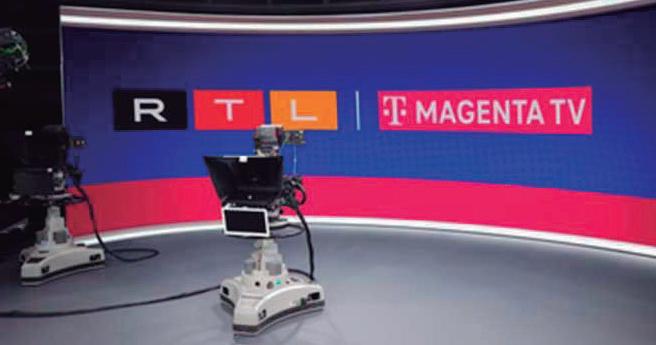
quality. In partnership with Telekom, we are now operating an independent 5G mobile network at our broadcast center in Cologne to deliver our high-reach content even more comfortably and efficiently to our viewers and users. This marks another step in our innovation partnership,” says Matthias Dang, Chief Commercial, Technology & Data Officer of RTL Deutschland.
Klaus Werner, Managing Director for Business Customers at Telekom Deutschland, adds: “With RTL, we have an innovative partner with whom we jointly develop and bring our products and solutions to market readiness. The 5G Campus-Netz Private meets the particularly high requirements of live TV production with its network architecture featuring 5G standalone technology, providing essential functions such as minimal response times and high bandwidths.”
Maximum 5G performance also at Euro 2024
The broadcasts surrounding this year’s UEFA European Football Championship are set to benefit from the advantages of the campus network on the production site. The innovation network will be expanded to an adjacent event venue during the tournament. Here, coverage of public viewing events will
be delivered live over 5G. This time, however, not through the previously successfully tested public Telekom 5G SA network with network slicing, but via RTL’s private 5G campus network. This ensures flawless live transmission even when the mobile network cells of the public network are congested. For on-the-go coverage, Telekom, together with RTL, has already successfully tested live transmission via the public Telekom 5G SA network with network slicing.
Campus-Netz private for customized requirements
The 5G campus network will be installed not only in two RTL studios but also in the so-called mall. Additionally, the visitor parking lot of RTL in Cologne-Deutz will be covered by 5G. Together with the area for public viewing during the UEFA Euro, the campus network covers an area of more than 35,000 square meters, enabling uninterrupted coverage for RTL both indoors and outdoors.
The 5G SA network operates separately from the public mobile network. The entire infrastructure, from antennas to active system technology to the core network, is provided by Ericsson and installed locally at the Cologne-Deutz site. This keeps all data traffic within the local campus network.
SK Gaming GmbH&Co.KG, a renowned German eSports club, has embarked on a groundbreaking collaboration with Kiloview to, in the company’s words, ‘usher in a new era of lightweight and cost-effective live production’. Founded in 1997, SK Gaming has long been recognized as a powerhouse in European eSports, boasting a wide array of successful teams across popular gaming titles like Counter-Strike and Clash Royale.
The move comes as SK Gaming relocates to a new office in Cologne, aiming to establish a versatile content production center to support its thriving esports business. The focal point of this initiative is the creation of an innovative studio equipped with IP-based solutions, chosen for their adaptability and scalability in meeting the demands of modern AV content processing.
Bastiaan Brands, the Production Manager at SK Gaming, expressed his satisfaction with Kiloview’s NDI technology, stating that it significantly streamlined the studio’s operations while solidifying SK Gaming’s position as a leader in the esports industry.
The relocation to the OVUM complex in Cologne presented SK Gaming with a unique set of challenges, given the vast and
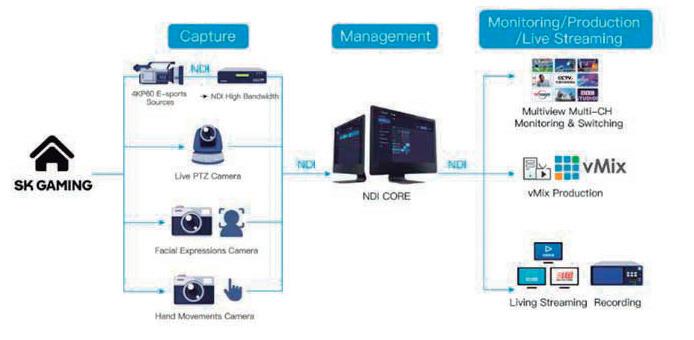
intricate nature of the facility. With multiple production units spread across three floors, the need for a reliable and efficient video infrastructure was paramount. Previously, SK Gaming had relied on traditional methods involving a multitude of SDI cables, leading to high costs and interoperability issues.
Kiloview’s comprehensive NDI solution offered the ricght answer to SK Gaming’s needs, providing great value, stability, and compatibility. The deployment process was simplified significantly, with NDI Core and Multiview Pro requiring only software installation for seamless management and monitoring of all NDI devices.
Central to the solution was the N40 4K/HD All-in-one Converter, renowned for its top-quality video processing capabilities, and the NDI Core System, which facilitated unified scheduling of audio and video signals with seamless switching.
Multiview Pro, a powerful multi-screen monitoring and switching system, replaced traditional hardware devices, further enhancing efficiency and reducing costs.
By embracing NDI technology, SK Gaming has positioned itself at the forefront of esports production, setting a precedent for other studios to follow suit. With Kiloview’s support, the future of esports production looks brighter than ever, promising greater flexibility, efficiency, and innovation.
Bastiaan Brands concluded by highlighting the potential of NDI technology in the esports market, emphasizing its lower infrastructure costs and flexibility. He believes that showcasing SK Gaming’s renovated facility will inspire other studios to embrace NDI and unlock new possibilities in content creation and production.
Rohde & Schwarz has successfully deployed its Pixel Power graphics and playout technology at Südwestrundfunk (SWR), a key regional broadcaster located in Baden-Baden, Germany. SWR, a member of the ARD consortium, now provides cutting-edge playout services not only for its own channels but also for other major broadcasters in southern Germany, including Saarländischer Rundfunk (SR), Hessischer Rundfunk (HR), and Bayerischer Rundfunk (BR).
Facing the obsolescence of its previous playout infrastructure, SWR decided to upgrade to a contemporary software-defined system. An essential requirement for SWR was the integration of graphics and branding into the playout system.
After comprehensive evaluations, SWR chose the Pixel Power solution from Rohde & Schwarz based on its advanced capabilities. The selection was influenced by Pixel Power’s
established reputation in delivering superior graphics quality. The Gallium automation and StreamMaster signal processing platforms by Pixel Power are adaptable to the specific needs of each user, functioning as a flexible, scalable, and future-oriented playout solution.
“In our search for a modern playout solution, we wanted a solution that is truly future-proof, flexible, and highly scalable,” stated Udo Fettig, Project Manager at SWR. “Gallium and StreamMaster is our chosen solution, providing all necessary information in one graphical user interface, without restrictions. We could lay the system out to suit all our operational workflows.”
The solution’s design allows SWR to not only manage live events seamlessly but also to incorporate real-time graphics updates for various needs, such as broadcasting lottery results or
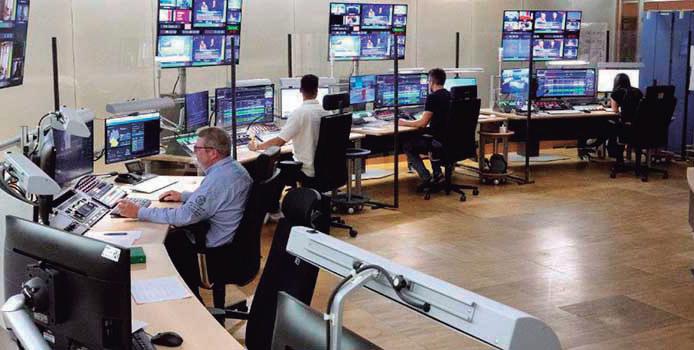
issuing severe weather warnings. It also includes text-to-speech features to aid visually impaired viewers with emergency notifications.
James Gilbert, CEO of Pixel Power and Director of Product Management for Rohde & Schwarz media solutions, emphasized the critical importance of live content. “Live content is absolutely central to linear channels,” Gilbert explained. “Thematic channels will ultimately be replaced by VoD: linear broadcasters must have the ability not just to integrate live events but to react to changing situations, ” he added.
The Pixel Power systems, Gallium and StreamMaster, operate on industry-standard hardware and offer the flexibility to function on-site, in the cloud, or in a hybrid mode. They support remote access capabilities; SWR has successfully managed broadcasts from a home office setting while maintaining full operational control and responsiveness to live and unplanned events.
“We are happy that the system is expandable and can scale up easily to meet our evolving requirements. Playout needs can arise very quickly, and the system lets us be even quicker,” noted Andreas Mungenast, Head of Playout and Media Operations Center at SWR.
The 12th HbbTV Symposium and Awards, scheduled for 14-15 November 2024 in London, UK, is set to offer a premier platform for discussing the latest advancements in the connected TV industry. Co-hosted by the HbbTV Association and Everyone TV (BBC/ITV/Channel 4/Channel 5), the event invites industry leaders and experts to present at the conference.
According to the association, the key topics for 2024 will be:
• Consumer-facing services and innovations in HbbTV markets
• HbbTV operator application
• Targeted advertising, including watermarks for set-top box markets
• HbbTV test suite and interoperability
• DVB-I and linear (live) IP channels
The HbbTV Association is particularly interested in presentations that highlight user experiences and business opportunities enabled by HbbTV technology, especially those supported by case studies of live services. However, submissions on additional relevant topics will also be considered.
Presentation guidelines:
• Maximum duration: 10 minutes
• Submissions will be reviewed by the HbbTV Marketing and Education Working Group (MEWG), responsible for organizing the event.
Event format:
Building on last year’s successful format, the symposium will feature a traditional conference on the first day, culminating in the glamorous HbbTV Awards ceremony in the evening. The second day will adopt an
unconference format, allowing participants to shape the agenda, topics, and discussions, fostering dynamic and interactive sessions.
How to apply:
To apply as a speaker for the HbbTV Symposium 2024 in London on 14 November, submit an outline of your proposed presentation via the online form. Include the title, an abstract (max. 200 words), a speaker’s biography (max. 150 words), and a speaker’s photo by 31 August 2024.
Venue and sponsorship:
The HbbTV Symposium and Awards 2024 will be held at Church House, a prestigious venue in the heart of Westminster, central London. This location will provide an excellent setting for speakers, attendees, sponsors, and networking opportunities.
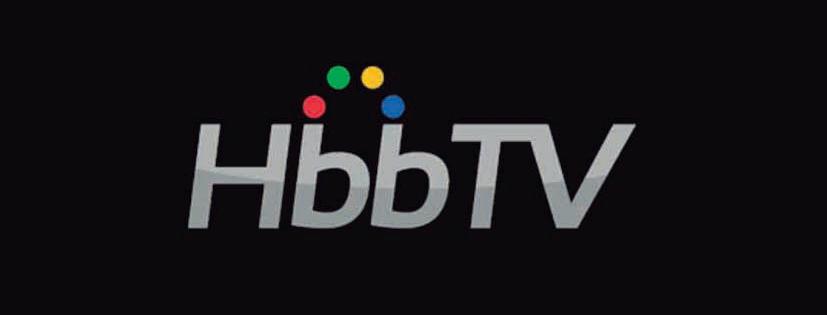
This appointment underscores EVS’ commitment to solidifying its presence and expanding its influence in this strategic region.
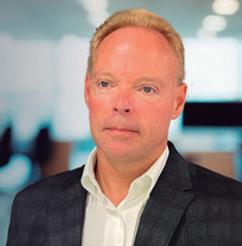
EVS has announced the appointment of Richard Katz as Senior Vice President of Operations for the North and Latin American (NALA) region. This appointment is integral to EVS’ broader strategy to further invest in the NALA region, anticipating significant growth and aiming to elevate customer service and project management to the highest industry standards on a global scale.
Richard’s primary objectives are to strengthen the structure of the region’s operations team, elevate service levels to world-class standards, and reinforce the collaboration with the sales force. In his role, he will oversee all daily operations and ensure the delivery of EVS’ professional services, including customer support and project management. Additionally, Richard will manage technical

and support escalations to guarantee customer satisfaction. These efforts aim to foster sustainable growth in this strategic region.
Richard brings a wealth of knowledge and expertise in broadcasting technology and 2110 networks to EVS. Known for optimizing work fl ows, fostering crossfunctional collaboration, and strategic resource allocation, he possesses a deep understanding of the wider video delivery chain from production all the way through to CDN and OTT. Prior to his arrival at EVS, Richard was Vice President of Technology and Engineering at Pac-12 Networks, overseeing the production of hundreds of live broadcast events annually, consistently achieving seamless operations. He has also held signi fi cant
roles at IFIT, CSI Sports, and NBC Universal, demonstrating his operational leadership, and strategic capabilities.
Xavier Orri, Chief Ex perience O ffi cer at EVS commented: “The NALA region is a strategically important area of growth for EVS and Richard’s proven track record and commitment to excellence make him the ideal candidate to lead our operations in the region. We are con fi dent that under his leadership, EVS will continue to accelerate growth and reinforce its market position in North and Latin America.”
Richard Katz stated: “As EVS expands its leadership from live production technology to the entire broadcast ecosystem, guiding our team and customers on this journey is incredibly exciting.”
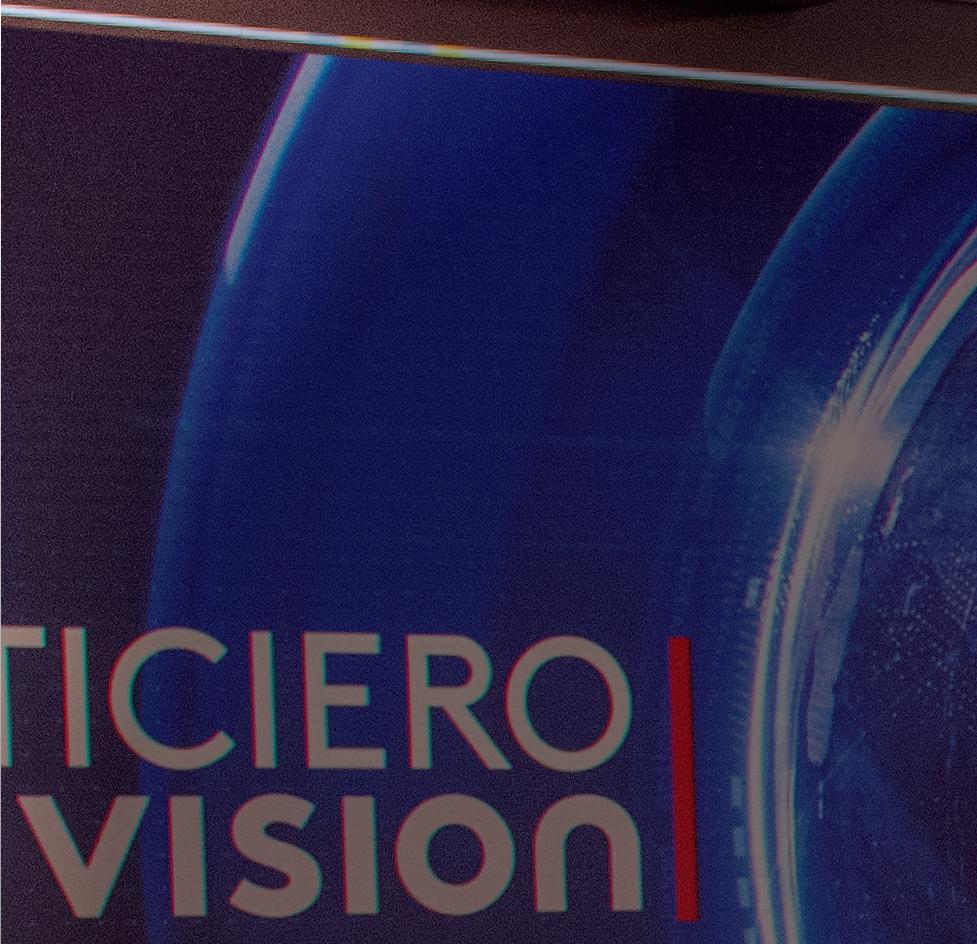
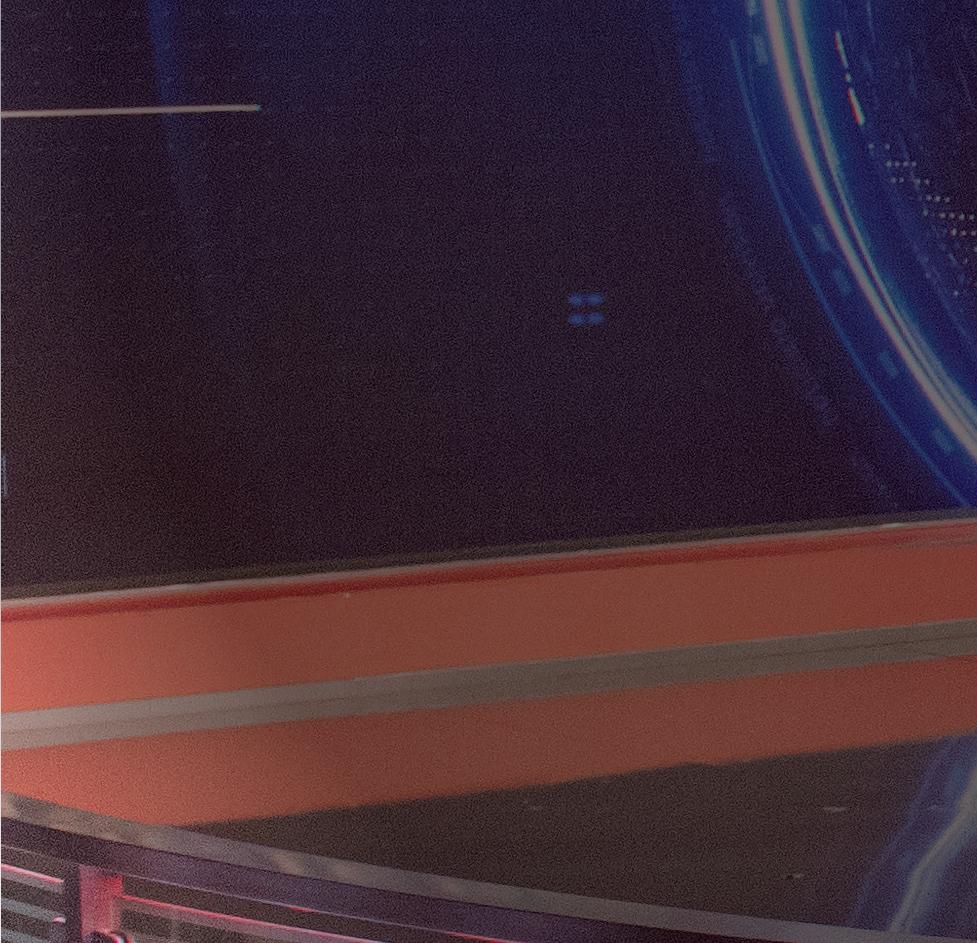
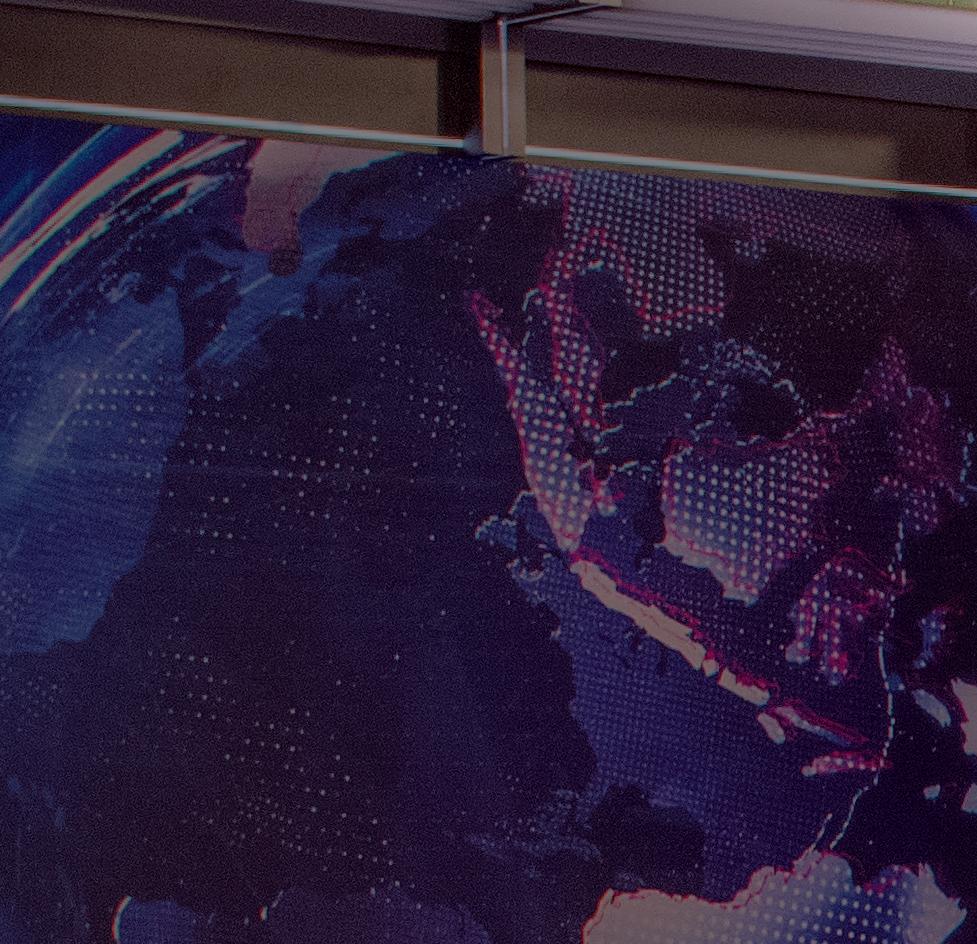
In an insightful interview with Ralf Jacob, Executive Vice President of TelevisaUnivision, we explore the transformative journey the company is taking to revolutionize its broadcasting and content delivery systems. Jacob outlines the company’s strategic shift to IP-based technologies and cloud integration that will redefine efficiency and scalability in broadcasting. This transformation is not only about adopting new technologies, but also about leveraging these advances to improve the viewer experience and operational workflows.

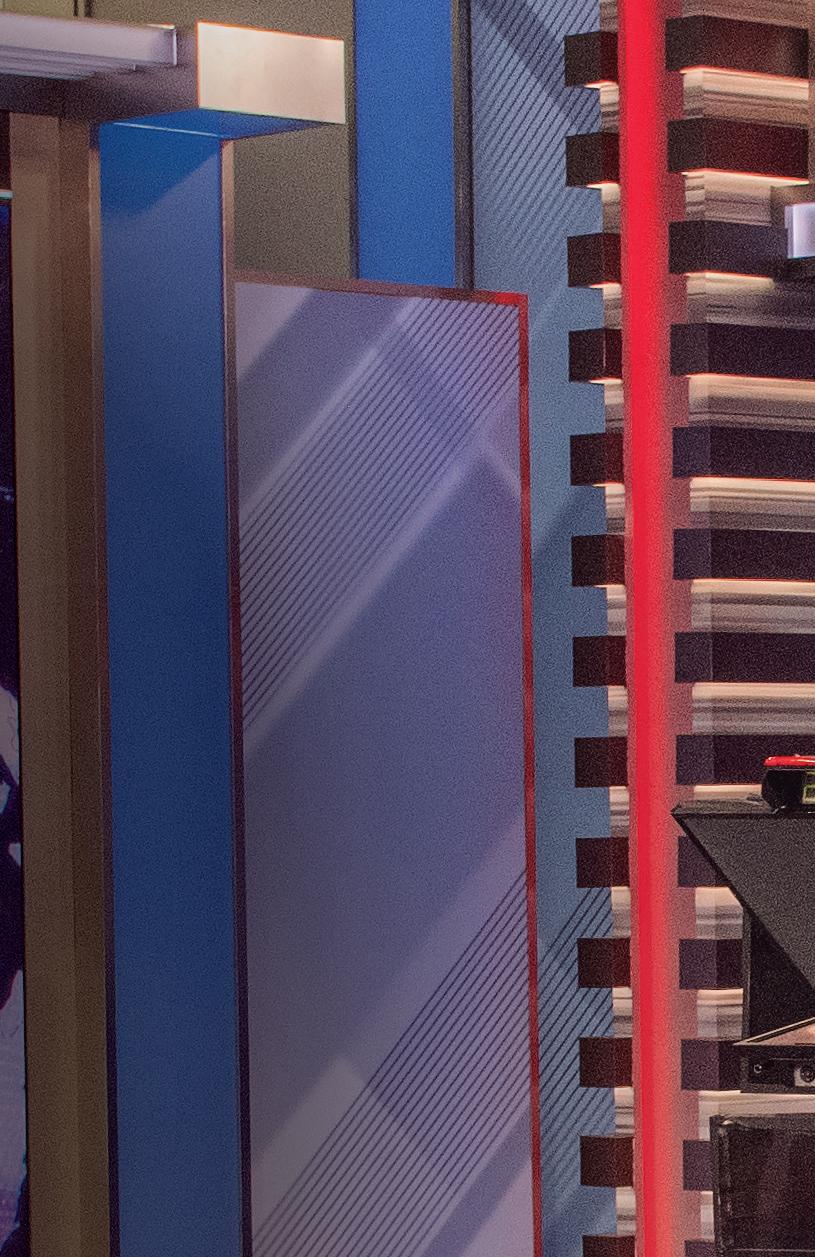
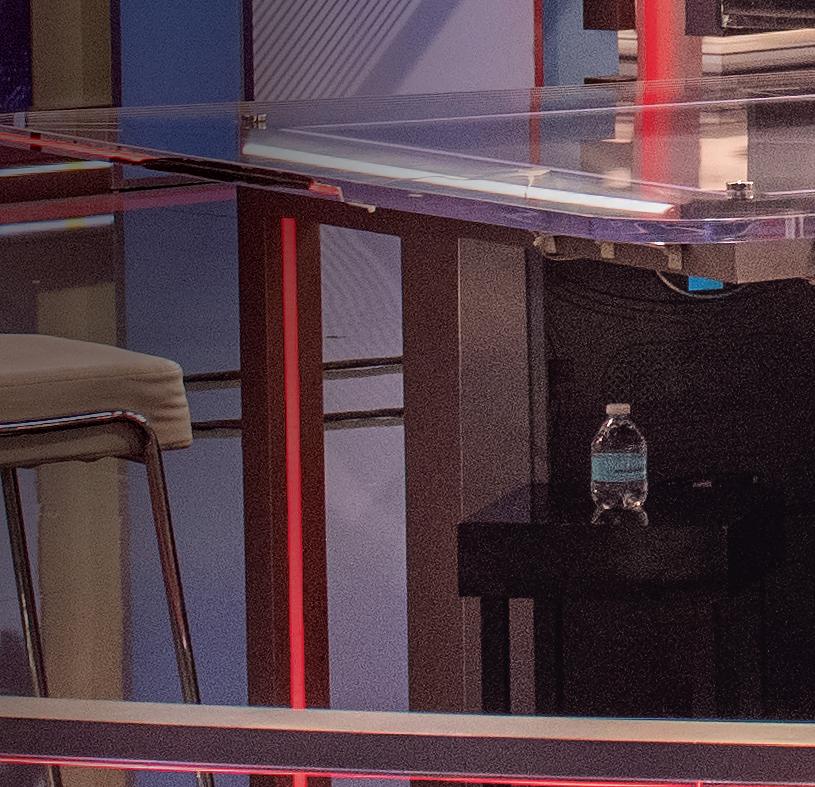



The first American broadcaster in Spanish language is at the forefront of integrating artificial intelligence (AI) to optimize content management and viewer engagement. Jacob discusses how AI is being used to enhance metadata, automate services such as rewriting content synopses, and improve captioning and translation processes. These innovations are designed to streamline
operations and provide more personalized content recommendations to viewers, increasing engagement and satisfaction.
The interview also highlights the company’s e ff orts to enhance content security and its strategic use of data analytics to tailor advertising and content to specifi c audience segments.
Ralf Jacob, Executive Vice President of TelevisaUnivisionBy embracing AI and data analytics, TelevisaUnivision aims to stay ahead in the competitive media landscape and ensure that its content remains relevant and engaging to its vast audience across the Spanish-speaking world.
With the collaboration of
Michael Cerda, Outcome-driven Product & Tech LeaderWhich specific IP technologies TelevisaUnivision has adopted in the past year to enhance broadcast efficiency and scalability, especially in light of the partnership with LTN for IP-based video distribution?
After the merger between Univision Communications Inc. and Televisa in January 2022 to create TelevisaUnivision, the new company is undergoing a complete IP transformation that will likely take 4-5 years to complete. The initial approach is to consolidate on-prem broadcast equipment and workflows and then move these services into GCP. The U.S. division is focused on eliminating the need for satellite distribution with SES but maintains its Intelsat operation for the foreseeable future. By June 2024, we will have offloaded three SES satellites. Our current setup utilizes Harmonics XOS for on-prem to local media IP distribution using interconnects. Later in the year, we will be moving on-prem services to the cloud.
One of the more underestimated challenges is the ability to monitor your redundant feeds in the cloud and to be able to immediately act on issues like congestion and/or possible packet loss to switch between A & B feeds. At IBC, we discovered a company called Alvalinks that helped us isolate network congestion and/or packet-loss and improved our visibility on what is happening in the cloud.
With the transition to IP-based video distribution facilitated by the partnership with LTN and the adoption of the LTN Wave solution, how has TelevisaUnivision’s network infrastructure evolved to manage
the increased demand for live news, sports, and entertainment broadcasts across diverse platforms?
We rely on their managed service offering, particularly for all our News, LIVE sports and FX events. Similar to other broadcasters, we are focusing on lowering latency while also providing DAI capabilities. The complexity of utilizing DAI/SSAI is still a challenge in our industry. Lots of vendors are coming up with scenarios using webRTC or extending buffer length and experimenting with compression-based approaches, but we haven’t really found a perfect solution yet. You want DAI, you concede to giving in to latency.
One of the more underestimated challenges is the ability to monitor your redundant feeds in the cloud and to be able to immediately act on issues like congestion and/or possible packet loss to switch between A & B feeds.
How has TelevisaUnivision improved its media asset management systems recently, and what impact has this had on production workflows and content distribution efficiency?
Looking at our roadmap, we are planning on starting MAM consolidation later this year, but it is a lengthy process, and I won’t speculate how long it may take. We have a massive vault of 80+ years of content in Protele, Mexico, and another vault in Miami. We are in the process of moving hundreds of thousands of assets into GCP now but had to take de-duplication into account first. We are working closely with AVID on the deployment.
With the push towards IP-first initiatives, what new technologies or upgrades has TelevisaUnivision integrated to optimize content delivery and quality assurance across its traditional and digital broadcast platforms?
We are spending a lot of time on metadata enhancement via AI. It is mind-boggling how rapidly AI is advancing. A parse process through media can provide an enormous amount of additional metadata info, to the degree that you’ll be able to describe a scene through search and the asset could be found. This will be incredibly impactful for content discovery and make our viewers even stickier. I am excited about all the use-cases we are experimenting with.
In what ways has TelevisaUnivision integrated artificial intelligence into its broadcast operations, and what tangible benefits have these integrations provided to your content creation and audience engagement strategies?
Content Operations is heavily looking into automating services such as synopsis re-write for distribution partners, compliant CC, transcription, and translation services
through the use of AI. I see a lot of advantages using AI, should speed up our QC processes significantly. Don’t quite trust all the AI output yet so QC & eyes on glass will be with us for quite some time. I mentioned scene detection and metadata enhancements that go above and beyond a provided synopsis.
Given the various applications of REMI (Remote Integration Model) production in reducing costs and enhancing remote operation capabilities, can you describe specific REMI workflows TelevisaUnivision has implemented for live sports or entertainment events?
Camera feeds and audio are sent via dedicated internet connections and/or bonded cell services or satellite links to a central control room where the director, technical director, and graphics operators can manage the broadcast.
This eliminates the need for a large production truck and crew on-site, saving significant costs. With REMI, we can position smaller production teams at key locations with basic equipment to capture video and audio. These feeds are then sent back to our control room for integration into a cohesive broadcast.
Could you provide examples of how virtual or augmented reality has been utilized in TelevisaUnivision’s programming or production processes this year?
One particular example: In anticipation of the elections in Mexico, our
production team created an entire ‘green’ studio that can be controlled through a remote app, i.e. virtually super-imposing results-boards, statistics etc while the moderators roam across the virtual room to invisible markers on the fl oor, moving from one virtual display to another.
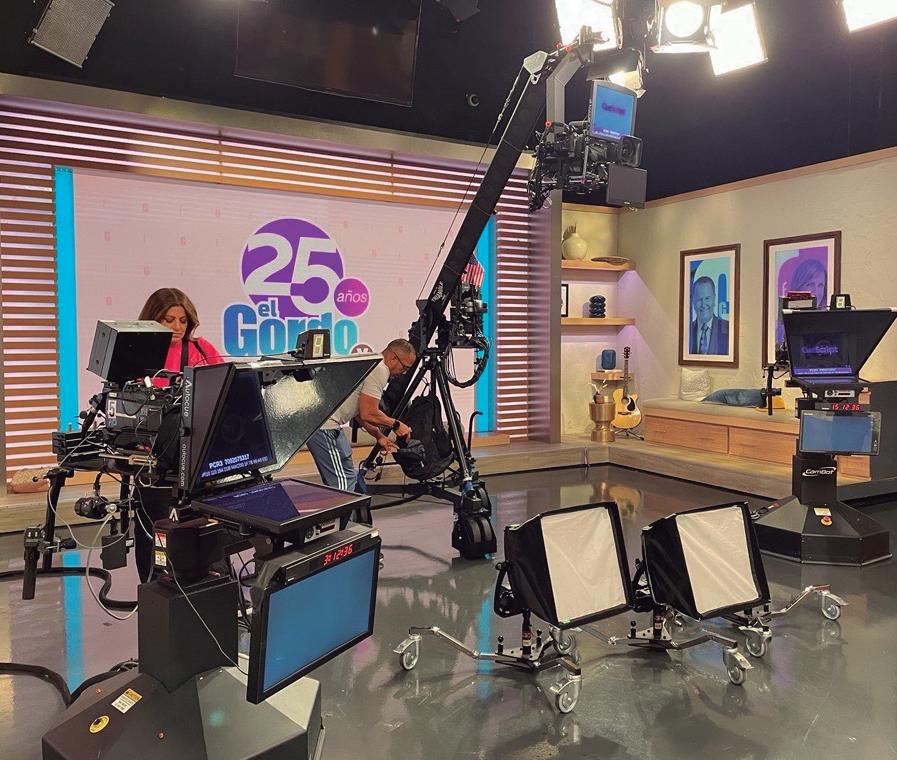
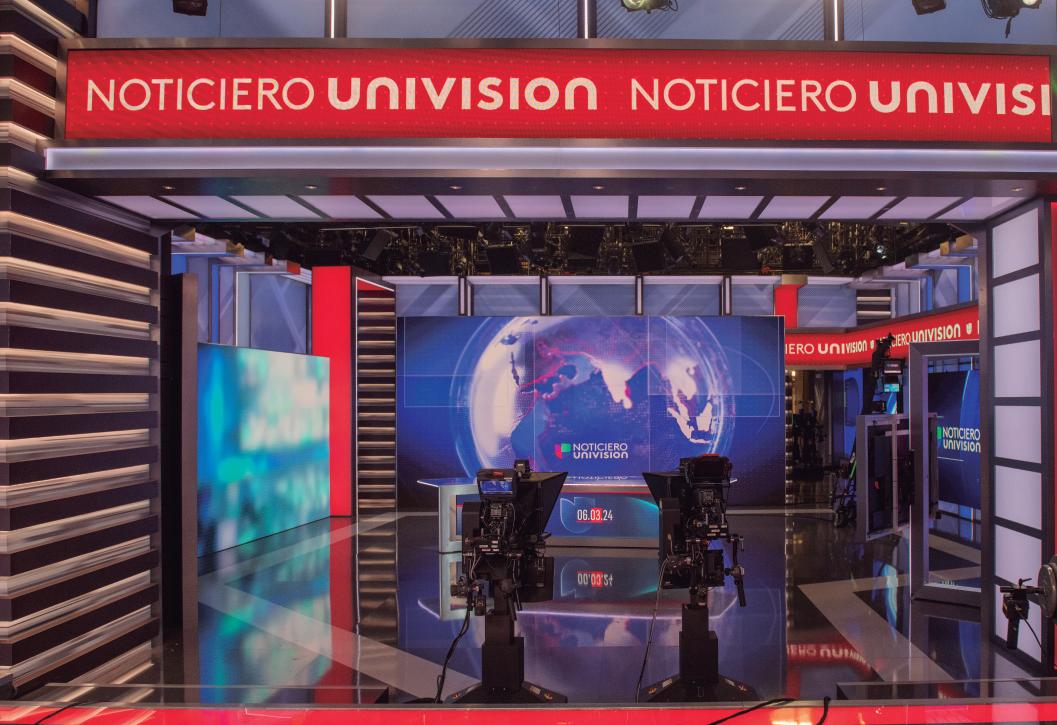
What new monetization strategies has TelevisaUnivision implemented, particularly regarding its streaming services and IP distribution models?
Our streaming service platform ViX offers three tiers of user access: Gratis, a free, ad-supported tier with over 80 channels and vast library of content on demand; and subscription tiers Premium and Premium with Ads – one without ads and one with limited ads at a lower price point – giving subscribers access to an incremental
17,000 hours of premium original series, movies, and live sports on top of the free offering. This caters to a wider audience while generating subscription revenue. We are seeing success in exceeding advertising market growth, particularly in the US Hispanic market.
By leveraging first-party data collected through user engagement, we can personalize ad experiences and offer targeted advertising to specific viewer segments within ViX, attracting premium ad rates.
Additionally we launched Free Ad-Supported Streaming TV (FAST) channels on platforms like Samsung, Roku, and Amazon. These channels offer free, curated content with advertising breaks, generating additional revenue streams.
Spanish is spoken in over 20 countries world-wide, that is our audience.
With a TAM (television audience measurement) of 600M Spanish speaking viewers, after only 2 years online, we surpassed 50M MAUs (monthly active users).
With the launch of the ViX platform, what key technological advancements have been crucial in managing and delivering a high-quality streaming experience to a large Spanish-speaking audience?
(Answer by Michael Cerda)
The key technological advances were kind of… Everything. We not only didn’t have the technology capabilities in house, we didn’t have the team in place either. This required first investing in hiring a streaming veteran team. We recruited people from Disney+, Netflix, Warner Bros Discovery, Viacom and Hulu, and in record time they stood up the Vix stack. They focused in-house efforts on apps, APIs and
CMS, and integrated various best-in-class vendor partners in areas of identity, subscription management, payments, and players. Some of the key areas speci fi cally for the Spanish language audience was having diversity of programming (entertainment, news and sports), diversity in content consumption (supporting both traditional VOD features and EPG interfaces), and ensuring we built the dominant apps for the region, which are Android and Roku in Mexico and Latin America, and Apple in the US. To sum it up, the key advances were both building fast and scaling fast to support major high volume events like the World Cup.
Spanish is spoken in over 20 countries world-wide, that is our audience. With a TAM (television audience measurement) of 600M Spanish speaking viewers, after only 2 years online, we surpassed 50M MAUs (monthly active users).
How has
TelevisaUnivision enhanced its content security measures in the wake of increasing digital distribution channels?
TelevisaUnivision distributes its programming content to the broadcast stations and MVPDs (Multichannel Video Programming Distributor) using one of the following technologies: Basic Interoperable Scrambling System (BISS 2) or AES 128 Encryption with Conditional Access.
How is TelevisaUnivision leveraging consumer data and analytics to tailor content and advertising, thereby enhancing viewer engagement and satisfaction?
By understanding viewer preferences and analysing viewing habits, watch history, and search behaviour, we can identify user preferences and suggest content recommendations tailored to individual interests. This keeps viewers engaged and coming back for more.
Utilizing AI for recommendations is increasingly important. Over time, we will be able to create psychographics (interests, values) which we will use to possibly create content collections and promotions relevant to specific viewer segments.
What are the next big technological innovations
TelevisaUnivision is planning to implement in the coming years to stay ahead in the competitive broadcast industry?
I already mentioned AIpowered Recommendation Engines, and we are also exploring micro-targeting with AI to create hyperpersonalized content experiences. This could involve tailoring content based on factors like time of day, weather conditions, or even a viewer’s emotional state. With regards to AI generated content creation, we are staying away from that for now, lots of rightsissues have to be sussed out, there are concerns on what LLM has been used, plagiarism etc… same goes
for dubbing in the talent’s original voice, time will tell. I expect new, more complex deals will have to be struck with talents going forward.
As a leading media conglomerate in Latin America,
TelevisaUnivision has a considerable influence on the cultural and informational landscape across the continent. Could you tell us about the responsibilities that come with this leadership role, particularly in terms of setting trends in content creation, initiating technological innovations, and driving sustainable development initiatives within the industry?
At TelevisaUnivision, we believe our leadership role comes with a significant responsibility to shape the
cultural and informational landscape across Latin America. We strive to achieve this through a three-pronged approach: fostering inclusive content creation, driving technological innovation, and championing sustainable development initiatives.
Regarding Content Creation:
We leverage our vast platform to showcase the vibrant tapestry of cultures and stories across the region. We champion diverse voices, stories, and talent, fostering a more inclusive and representative media landscape. We understand the power of storytelling to influence social norms and values, and we use it to promote positive messages around education, health, gender equality, and environmental awareness.
At TelevisaUnivision, we believe our leadership role comes with a significant responsibility to shape the cultural and informational landscape across Latin America.
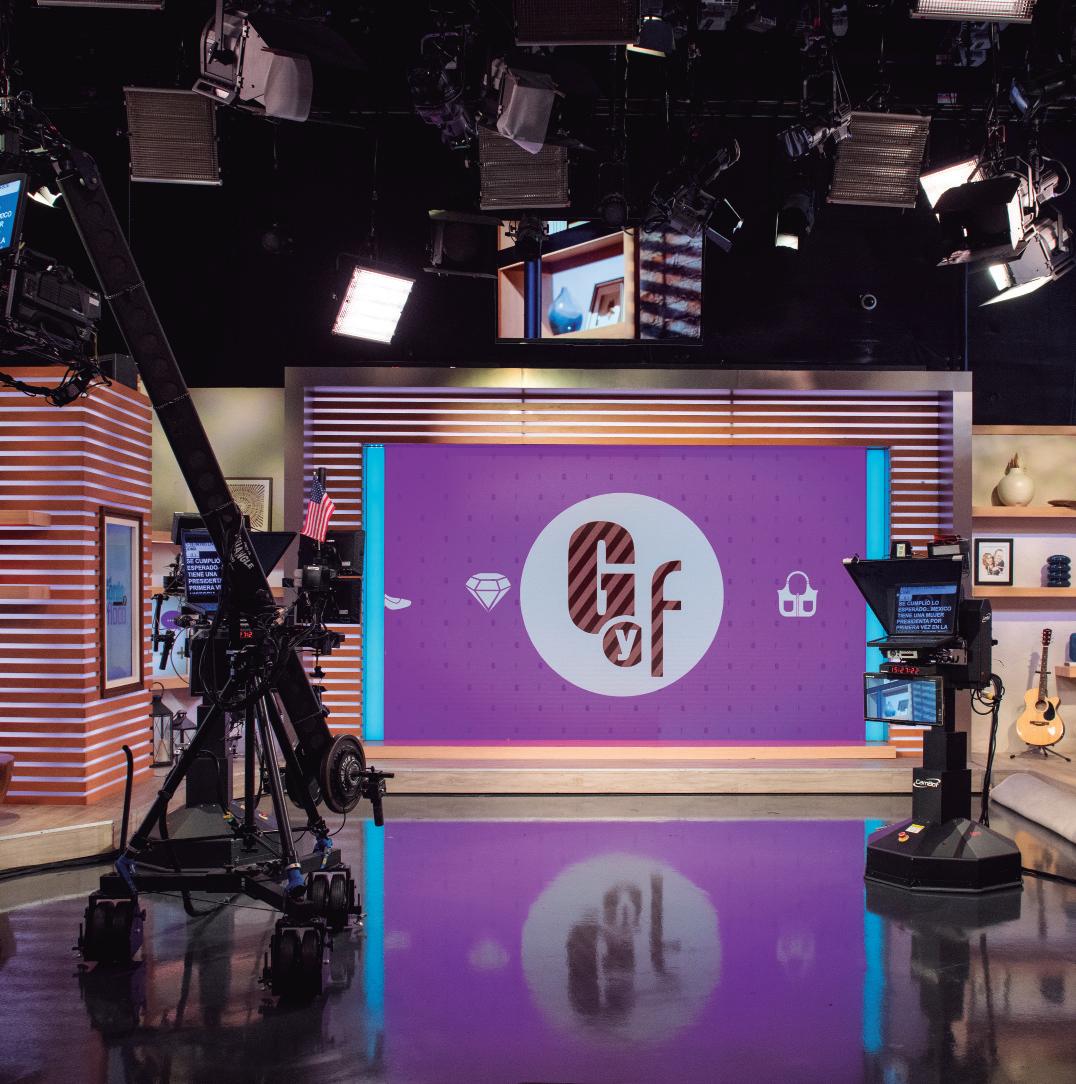
Regarding Technological Innovation:
We’re committed to leading the way in media and technology advancements. This includes developing and implementing new technologies that make our content accessible
to everyone, regardless of ability. We believe in supporting the development of a skilled workforce in the media and technology sectors within the region. We inaugurated training programs & partnerships
with universities. As we collect and utilize consumer data, data privacy remains a top priority. We strive for transparency in our data collection practices and implement robust security measures to protect user information.
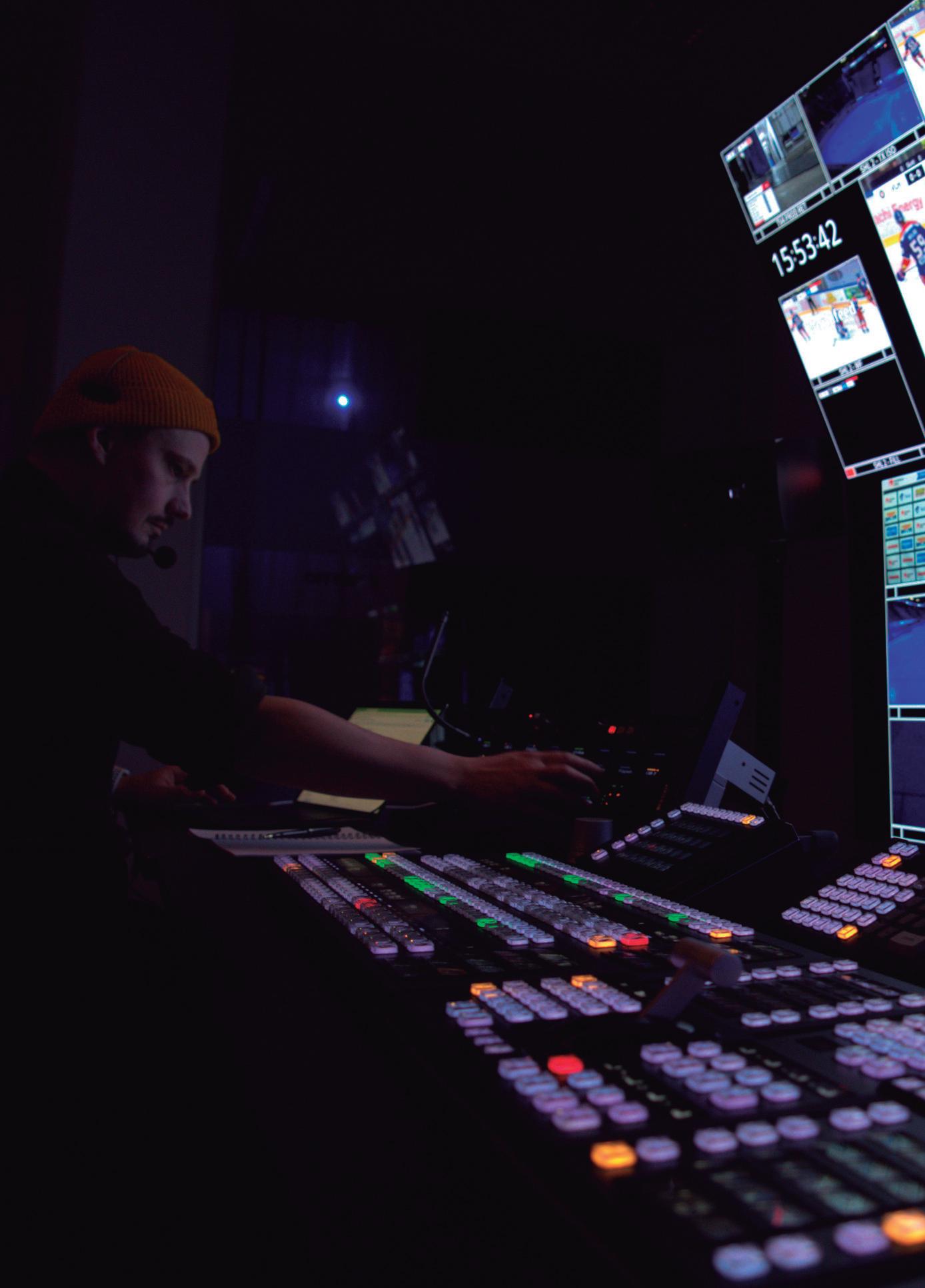
Boosting remote production for seamless sports broadcasting

That necessity sharpens ingenuity is nothing new: in fact, this saying concentrates the essence of engineering: finding the best solution for each problem, using resources as efficiently as possible.
This was the starting point for the creation of TFC (Total Facility Control). The solution was born out of the need to simplify and automate the complex process of confi guring IP 2110 technology within existing broadcast control systems. Neil Smith and his colleague Daniel Murphy created TFC as an innovative solution to harness the power of IP while making it more intuitive for broadcast engineers accustomed to baseband workfl ows.
First TFC complete deployment and use was for Sky Sports F1 in 2019.
TM Broadcast International brings its readers, within this interview, a glimpse into the fascinating journey and ground breaking innovation behind NEP’s Total Facility Control (TFC) platform. From simplifying complex configurations to integrating seamlessly with legacy systems, TFC stands as a testament to NEP’s commitment to innovation and excellence in the broadcast industry, and the magazine wanted to explore how TFC is setting new standards in broadcast technology, driving efficiency, and enhancing production quality worldwide. We spoke with Neil Smith, Global Head of Platform Engineering at NEP, and TFC’s co-creator, and with Per de Navarro, CTO at NEP Sweden, who recently implemented three new NEP ROCs.
Shall we start to discover how the trip was? Come with us.
Where NEP’s solution TFC did come from?
TFC (Total Facility Control) originated from a need that arose while NEP engineers were working on building two trucks for a major sports event in Australia 2017-2018. So we developed it to help IP engineers facilitate a connection across the WAN out of need because it was a slow, complicated process that they were doing.
Together with Dan Murphy, we came up with a few neat solutions on how we could make this better. And then from there, it grew into what is now TFC.
The solution was developed out of need, really. When we were building two trucks for a major game on the Gold Coast; we were using an existing software control system from another vendor, and it was a very slow process trying to make that work. We were getting very frustrated doing the manual work that was required to make this new IP 2110 technology work inside this legacy control system.
What are the specific challenges that the TFC platform has solved for NEP engineers?
We were looking for addressing several specific challenges faced by our engineers, particularly in the context of adopting IP 2110 technology. The most significant were:
fi
One of the primary challenges was the complexity involved in configuring IP 2110 technology. Engineers found it difficult to manually configure devices to work within an IP 2110 environment. TFC automated many of these processes, making it easier for engineers to set up and manage IP-based systems. This automation reduced the need for manual configuration, which was time-consuming and prone to errors.
Before TFC, NEP engineers struggled with integrating new IP 2110 technology into existing legacy control systems. This integration was slow and cumbersome, requiring significant manual effort. TFC streamlined this process by providing a unified platform that could manage both IP and baseband environments seamlessly.
There was a notable shortage of engineers who were experts in IP 2110 technology. TFC was designed to be intuitive and user-friendly, allowing engineers who were familiar with traditional baseband systems to easily transition to IP-based work fl ows. This was crucial in overcoming the skills gap and enabling a broader range of engineers to work with IP technology.
Engineers found it difficult to manually configure devices to work within an IP 2110 environment. TFC automated many of these processes.
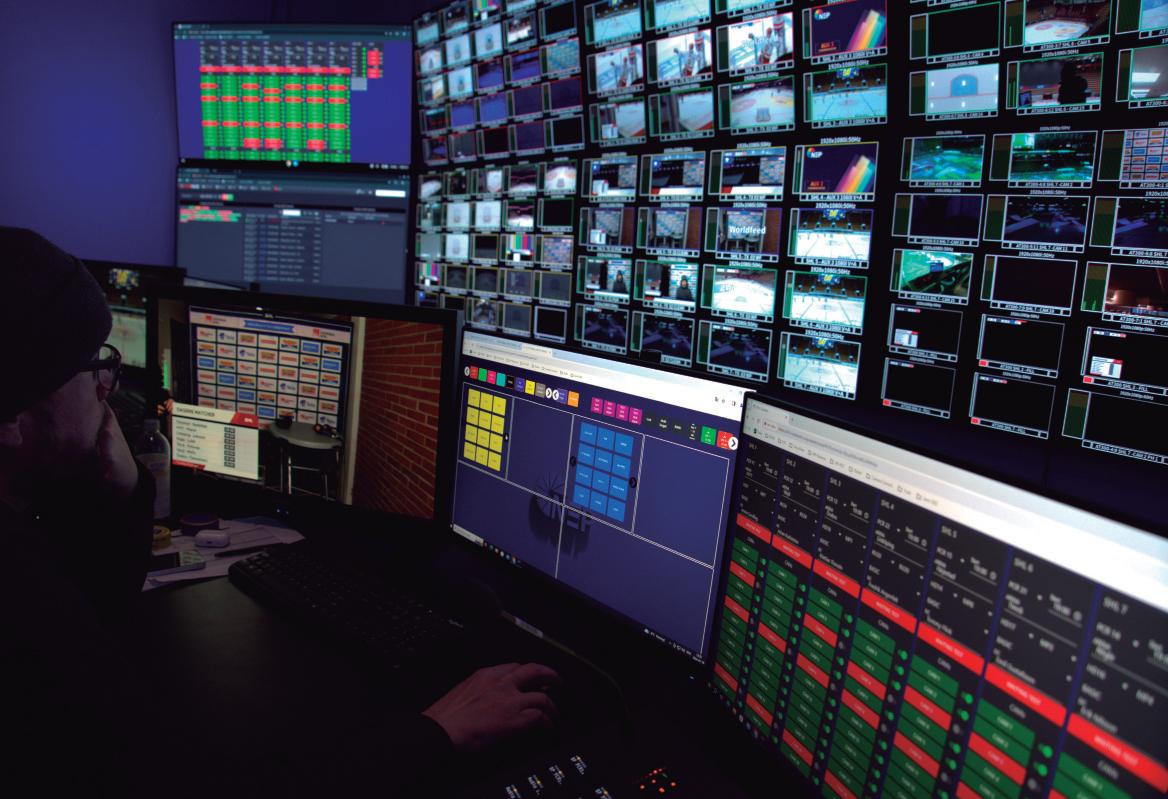
Managing and orchestrating the network flows required for IP 2110 was another significant challenge. TFC included a software-defined networking (SDN) controller that managed all network flows automatically. This eliminated the need for engineers to manually configure network settings, ensuring that bandwidth and other network resources were allocated efficiently.
The TFC solution provided the scalability
and flexibility needed to support various production formats and workflows. It allowed NEP to scale setups up and down and share resources between different facilities, making it easier to adapt to different production requirements and geographical locations.
The platform also o ff ered robust real-time monitoring and control capabilities. This allowed engineers to detect and correct network issues quickly, ensuring that
productions could proceed smoothly without technical interruptions.
TFC facilitated remote and decentralized production by enabling seamless connectivity between different production hubs and remote sites.
This was particularly beneficial for large-scale events and productions spread across multiple locations, reducing the need for extensive travel and on-site personnel.

How has the TFC platform evolved since its inception?
The TFC (Total Facility Control) platform has undergone significant evolution since its inception, driven by the need to simplify and enhance the management of IP 2110 technology in broadcast environments.
TFC was initially developed while covering a major sports competition around 2017-2018 by NEP engineers, including Neil Smith and Daniel Murphy, to address the complexities of configuring IP 2110 technology within
two OB vans, as required by the client. The platform was created to make IP technology accessible to broadcast engineers who were more familiar with traditional baseband systems.
The first major deployment of TFC was for the Sky Sports F1 in 2019, where it was used to manage IP 2110 technology within existing broadcast control systems.
Following its initial success, TFC became a standard solution implemented
By 2019, TFC was fully integrated into NEP’s Sky Sports Formula One kit, marking its first large-scale deployment.
across NEP’s broadcast facilities and OB (Outside Broadcast) units worldwide. By 2019, TFC was fully integrated into NEP’s Sky Sports Formula One kit, marking its first large-scale deployment.
Over the years, TFC has incorporated several technological advancements, as:
Software-Defined Networking (SDN): TFC includes an SDN controller that manages network flows automatically, ensuring efficient bandwidth allocation and network resource management.
Ephemeral Productions: This feature allows engineers to easily switch control rooms between different productions, enhancing flexibility and efficiency.
Integration with various devices: The platform has been designed to be technology-agnostic, allowing it to integrate with a wide range of broadcast devices and systems, including those from Sony, EVS, and Direct Out.
The future of TFC involves a shift towards more software-based solutions, moving away from physical hardware devices. This includes integrating software versions of traditional broadcast hardware, such as vision switchers and replay systems, into the TFC platform.
Where is TFC platform today, in terms of achievements?
The NEP Group’s TFC (Total Facility Control) platform has achieved remarkable milestones and recognition within the broadcast
industry since its inception. Today, TFC stands as a testament to NEP’s commitment to innovation and excellence in broadcast technology.
TFC has seen widespread adoption across NEP’s global network, being deployed in nearly 100 facilities worldwide. This extensive deployment far exceeds the initial plan of implementing TFC in just five facilities over five years. The platform has been used in approximately one million unique productions globally, underscoring its reliability and effectiveness. TFC’s versatility and scalability have been demonstrated in various productions, including NEP Sweden’s new IP 2110 facilities in Stockholm, Gothenburg, and Umeå, which supported over 400 matches during the 2023-2024 Swedish Hockey League season.
TFC has incorporated several technological advancements that have
enhanced its capabilities. One of the notable features is Ephemeral Productions, which allows for quick reconfi guration of production environments. This feature has been recognized for its innovation, winning awards such as the Product of the Year at the 2024 NAB Show. Additionally, TFC includes a Software-De fi ned Networking (SDN) controller that manages network fl ows automatically, ensuring e ffi cient bandwidth allocation and network resource management. These advancements have been crucial for large-scale events and complex production setups. TFC includes a SoftwareDefined Networking (SDN) controller that manages network flows automatically.
Looking ahead, NEP is shifting towards more software-based solutions, moving away from physical hardware devices.
This includes integrating software versions of traditional broadcast hardware, such as vision switchers and replay systems, into the TFC platform. This shift aims to enhance scalability, flexibility, and efficiency in broadcast production. TFC also enables the sharing of resources across NEP’s global network, allowing for more efficient use of equipment and personnel. This capability is expected to grow as NEP continues to expand its connected production ecosystem.
TFC?
A recent application of NEP’s Total Facility Control (TFC) platform can be seen in NEP Sweden’s new Remote Operation Centres (ROCs). These facilities, launched in September 2023, are located in Stockholm, Gothenburg,

and Umeå. They have been instrumental in supporting the broadcast delivery of the 2023-2024 Swedish Hockey League (SHL) season, covering 14 teams and more than 400 regular season and postseason games.
During the Swedish Hockey League (SHL) playoffs, the broadcaster aimed to have Outside Broadcast (OB) units onsite while keeping the production
teams offsite. This setup was made possible by NEP Sweden’s new IP 2110 facilities, which include Remote Operation Centres (ROCs) in Stockholm, Gothenburg, and Umeå. These facilities, powered by NEP’s Total Facility Control (TFC) platform, allowed crews to be stationed in specialized galleries: one for the game feed, one for the domestic feed, and one for audio.

How has NEP Group overcoming skepticism & championing IP 2110?
NEP Group has successfully overcome skepticism and championed IP 2110 technology by demonstrating its practical benefits, conducting proof-of-concept projects, highlighting financial and environmental advantages, simplifying technology through the TFC platform, gaining
industry recognition, and leveraging a global network for resource sharing. These efforts collectively showcase the value and effectiveness of connected production, winning over skeptics and setting new standards in the broadcast industry.
What financial and sustainability benefits come with the deployment of TFC platform?
Financial benefits
Cost efficiency and resource optimization:
One of the primary financial benefits of deploying the TFC platform is the reduction in operational costs. By enabling remote and centralized production, TFC minimizes the need for extensive travel and on-site personnel. For instance, during the 2023-2024 Swedish Hockey League (SHL) season more
than 20 operators who would typically work on-site were able to manage broadcasts remotely from NEP Sweden’s Remote Operation Centres (ROCs). This setup not only reduced travel expenses but also decreased the number of generatorpowered production units required on-site, leading to substantial cost savings.
Technology agnostic and incremental upgrades: TFC is designed to be technology agnostic, meaning it can integrate with existing broadcast infrastructure without necessitating a complete overhaul to IP-based systems. This adaptability allows broadcasters to add new devices with
One of the primary financial benefits of deploying the TFC platform is the reduction in operational costs.
minimal hardware changes, thereby avoiding the high costs associated with upgrading entire systems. Broadcasters can make incremental changes, focusing their investments on enhancing content quality rather than on expensive infrastructure upgrades.
Increased Utilization of Resources: TFC enables the sharing of resources across NEP’s global network, allowing for more efficient use of equipment.

For example, an EVS server in Australia that is idle during night time can be utilized for productions in the United States, maximizing the use of existing resources and reducing the need for additional equipment purchases.
Reduced carbon footprint: The ability to conduct remote and decentralized productions significantly reduces the carbon footprint associated with broadcasting. By minimizing travel and the need for on-site production units, TFC helps lower greenhouse gas emissions. During the SHL season, the reduction in travel and on-site equipment usage contributed to a more sustainable production model.
Energy efficiency: TFC’s integration with softwaredefined networking (SDN) and its ability to manage network flows automatically ensures efficient bandwidth allocation and network resource management.
This efficiency reduces the overall energy consumption of broadcast operations, contributing to a more sustainable production environment.
Support for sustainable practices: NEP’s commitment to sustainability is reflected in its operational practices. For instance, during the COP26 Summit, NEP supported the event with sustainable production solutions, including the use of public transport for crew members and the deployment of electric shuttle buses on-site. These practices, facilitated by TFC’s capabilities, demonstrate NEP’s dedication to reducing environmental impact.
With the conclusion of the 2023-2024 SHL season, the TFC kit in NEP Sweden’s facilities is being repurposed to support a major global sporting event taking place this summer. This flexibility in reusing equipment for different events underscores the financial
and environmental efficiency of the TFC platform. By repurposing existing resources, NEP avoids the need for additional equipment purchases and reduces waste, further enhancing sustainability.
for TFC development and deployment in a near future?
NEP Group has ambitious plans for the development and deployment of its Total Facility Control (TFC) platform in the near future, building on its unmatched expertise and specialization in using IP 2110 for broadcast. Since its inception in 2018, TFC has evolved into a global solution, extensively used in the United States and throughout Europe. Here’s a detailed look at NEP’s future plans for TFC:
TFC, which started in Australia, has now become a cornerstone of NEP’s global production ecosystem.
It is being deployed across NEP’s facilities worldwide, including in the United States, Europe, and other regions. This global integration allows NEP to offer a consistent and high-quality production experience regardless of location.
Moreover, NEP is continuously expanding its network of connected production hubs. Recent additions include new hubs in North America, APAC, and Europe, as well as the expansion of existing hubs like the Andrews Hub in Australia and the VISTA Hub in South Florida. These hubs are equipped with TFC, enabling seamless connectivity and resource sharing across NEP’s global network.
Shift to software-based solutions: NEP is moving towards more softwarebased solutions, reducing reliance on physical hardware. This includes integrating software versions of traditional broadcast hardware,
such as vision switchers and replay systems, into the TFC platform. This shift aims to enhance scalability, flexibility, and efficiency in broadcast production.
Ephemeral productions: One of the latest advancements in TFC is the Ephemeral Productions feature, which allows for quick reconfiguration of production environments. This feature enables production teams to switch control rooms between different shows with ease, using preset templates. This innovation saves time and resources, allowing teams to focus more on content creation.
Resource sharing and virtualization: TFC enables the sharing of resources across NEP’s global network, allowing for more efficient use of equipment. For example, an EVS server in Australia that is idle during night time can be utilized for productions in the United States. Additionally, NEP is leveraging virtualization to allow engineers to
work on configurations remotely, further enhancing flexibility and efficiency.
fficiency
By enabling remote and decentralized production, TFC significantly reduces the need for extensive travel and on-site personnel, thereby lowering the carbon footprint associated with broadcasting. This approach aligns with NEP’s commitment to sustainability and operational efficiency.
Besides, the adaptability of TFC allows broadcasters to integrate new devices with minimal hardware changes, avoiding the high costs associated with upgrading entire systems. This financial efficiency enables clients to prioritize content quality while managing costs effectively.
The platform developed by NEP Group has received positive feedback from
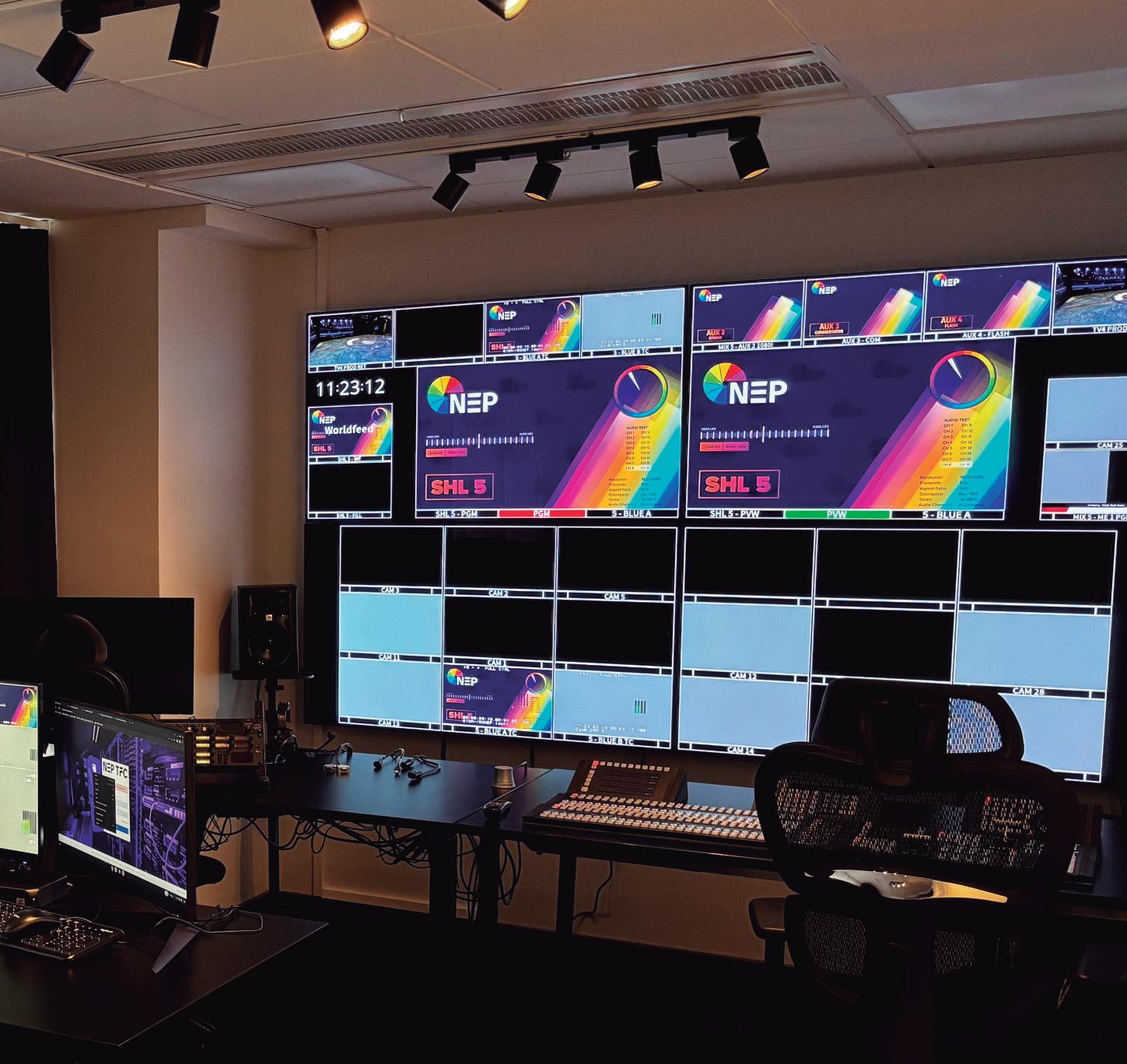
both NEP’s clients and competitors, with many expressing interest in adopting the platform for their own facilities.
NEP continues to develop TFC based on client feedback and industry needs. The platform is designed to be user-friendly, making
IP technology accessible to engineers familiar with traditional baseband systems. NEP’s robust support and training programs ensure that clients can effectively utilize the new technology.
The company’s plans for the development and deployment of TFC involve expanding its global network of connected production hubs, shifting towards software-based solutions, enhancing resource sharing and virtualization, and maintaining a strong focus on sustainability and financial efficiency.
Let’s talk about NEP Sweden; you recently built three new studios and facilities. How was the process?
What we did in Sweden was to evaluate the geography of the country, which is quite extensive with long distances to cover to reach different venues. Specifically for ice hockey, we realized that we needed a scalable, flexible, and dynamic workflow that IP technology provides.
We implemented a centralized-decentralized solution with our core infrastructure located in Stockholm. Additionally, we established production hubs in Stockholm, the west, and the north of Sweden, as these are the areas where the ice hockey production teams are based. This setup allows us to create “temporary bridges” to connect these hubs to our core as needed. Once a production is complete, we can reallocate resources efficiently.
Using the power of 2110 and our TFC control system, we can dynamically allocate and reconfigure production resources. For example, by pressing a few buttons, we can spin up a control room in any of these hubs and push all necessary settings and setups to that location. This flexibility not only supports current production needs but also allows for future expansion, potentially creating new hubs in other cities within Sweden or even elsewhere in Europe as required.
This approach has significantly improved our workflow efficiency and adaptability, ensuring that our productions, especially for ice hockey, are consistent and of high quality, meeting the demands of our clients and viewers.
How has the feedback been about the Swedish Hockey League? How has it enhanced the game for viewers?
The feedback from the Swedish Hockey League (SHL) has been overwhelmingly positive. By implementing our advanced IP-based solutions and the TFC control system, we’ve significantly enhanced the viewing experience for hockey fans. The SHL has noted that the quality and reliability of the broadcasts have improved, leading to a more engaging and immersive experience for viewers.
One of the key aspects that has received praise is the seamless integration of multiple camera angles and high-definition feeds, which provide a more dynamic and comprehensive view of the game. This capability allows fans to experience the action from various perspectives, making them feel closer to the game.
Using the power of 2110 and our TFC control system, we can dynamically allocate and reconfigure production resources.
Additionally, the flexibility and scalability of our IP-based infrastructure have allowed us to introduce innovative features, such as real-time analytics and interactive elements, that further enrich the viewing experience. The SHL has highlighted how these advancements have not only attracted more viewers but also increased fan engagement and satisfaction.
For viewers, the product is more consistent. After matches, our team can debrief and improve workflows immediately, leading to a better product. Initially, there were skeptics, but after seeing the results, they recognized the benefits. Happy operators lead to a happy client and ultimately a better experience for the viewers.
Happy operators lead to a happy client and ultimately a better experience for the viewers.


Lola Post Production, a pioneering visual effects (VFX) boutique based in London, was founded in 2000 by acclaimed VFX supervisor Rob Harvey. With a rich history that includes work on Ridley Scott’s “Gladiator,” Harvey and his team have built a reputation for delivering high-end, award-winning visual effects for film and television. Over the years, Lola has expanded its portfolio to include commercials, music videos, TV presentation graphics and long-form TV shows, embracing a diverse range of projects that showcase their agility and innovative approach.

In this exclusive interview with TM Broadcast International, Rob Harvey discusses the origins of Lola Post Production, the unique qualities that set them apart in the competitive VFX industry, and their recent projects, including the BAFTA-nominated “Universe” for the BBC and the ambitious “Walking With Dinosaurs” revival for BBC Studios. Harvey also shares insights into
how Lola has adapted to the evolving landscape of audiovisual post-production technologies, their innovative use of Unreal Engine, and the strategies they employ to foster creativity and collaboration within their team. Join us as we explore the journey of Lola Post Production and the vision that continues to drive their success in the ever-changing world of visual effects.
How did Lola Post Production come into existence, and what inspired its founding?
Lola was founded in 2000, among the first boutique visual effects (VFX) companies in London. I was a director at Millfilm and one of the VFX supervisors on Ridley Scott’s Gladiator. Upon the completion of that
project, a small group of us decided to establish our own facility. We had valuable contacts and clients who were highly supportive and encouraging. It was a significant and challenging decision, as our company was relying on external financing to cover the initial set-up and equipment costs. This presented a clear focus for our business strategy.
At the time, we identified an opportunity to make a move as the market was experiencing a decline in equipment prices. For instance, Flame was available at a competitive price of approximately £250,000. This allowed us to explore new avenues and pursue a more tailored approach to our business.

What are the unique qualities that differentiate Lola Post Production from its competitors in the industry?
We are a highly agile company, with a strong track record in commercials, music videos, and TV presentation graphics. However, we have also expanded our capabilities to include longform TV shows such as Ancient Egyptians (Channel 4/Wall to Wall) and Jack and the Beanstalk (Hensons), which represents a new genre for us. Furthermore, we expanded our client base to include feature fi lms and documentary and docu-drama projects. We embrace the diversity of our work and strive to avoid being pigeonholed.
I have been in the industry since the mid-eighties,
when CG was in its infancy. As a result, I have considerable experience of ‘old school’ techniques such as physical SFX, high-speed studio e ff ects, animation and models. We continue to combine these techniques with more cutting-edge technology, which allows us to create a distinctive approach and visual style while effectively managing challenging budgets.
Can you provide insights into recent projects successfully completed by Lola Post Production, challenges and how did you overcome them?
We have worked on some really diverse projects over the past couple of years. Universe for the BBC featuring Professor Brian Cox was nominated for a VFX BAFTA required us
We are a highly agile company, with a strong track record in commercials, music videos, and TV presentation graphics
to create almost two and a half hours of VFX, from the Big Bang to the Death of the Universe. We have also finished three Natural History Shows: Our Living World and Our Planet II for Netflix and David Attenborough’s Dinosaurs: The Final Day.
For Dangerous Liaisons (Starz/ Lionsgate) we recreated the splendour and slums of 18th Century Paris, including a full CG model based on historical maps, and in our spare time worked on The Completely Made Up Adventures of Dick Turpin (Apple TV+), Bad Sisters (Apple TV+) and Alexander: Making of a God (Netflix). Despite the challenges of Covid, remote working and strikes in the US, our rather diverse projects have kept us really busy.
We are currently working on Working With Dinosaurs, a six part series for BBC Studios that was officially announced yesterday. https://deadline. com/2024/06/walking-withdinosaurs-bbc-pbs-25years-1235958452/
It’s by far the biggest project Lola has undertaken and is due to fi nish at the end of the year. It’s around 1000 shots featuring a cast of around 50 dinosaurs, appearing in location plates shot around the world. We have had to expand the company quite considerably and build a robust creature pipeline and crew of specialist creature artists and animators.
The challenges for all these projects are always schedule and budgets. In most cases we get involved at the script stage, often even before the scripts are written or before the shows are o ffi cially green-lit. We o ff er advice to the clients about methodology and techniques and how to keep the ambition realistic, and we spend a great deal of time working things out on paper before we start – storyboards and concept art are a big thing at Lola.
How has Lola Post Production adapted to the evolving
landscape of audiovisual post-production technologies?
We try to keep our core team quite small and crew up depending on the project, also our tech and pipeline tends to evolve rather than us investing enormous sums of money in one go. Until recently we were a self-funded company, so we won’t usually jump on a bandwagon until we have a use for the tech. We do occasionally get very excited at new toys, back in the day we were very early fans of (amongst others) Houdini and Arnold and helped the guys at Tinder tools (before world domination), and we are currently knee-deep in Unreal Engine and having fun with that.
Could you share any innovative approaches or strategies
Lola Post Production has implemented recently?
On the subject of Unreal, we were asked to build an Unreal pipeline to create environments to
then shoot in a virtual studio with Sir David Attenborough for the Dinosaurs: The Final Day. Unfortunately, we only had six weeks between go-ahead and shoot so that was quite a steep learning curve! We have incorporated Unreal now into our production pipeline and are using it for location scouting, pre-vis, post-vis and in fi nal post…. It’s very exciting.
How does Lola Post Production foster creativity and collaboration within its team to deliver exceptional results in post-production projects?
We have a core team of very talented Supervisors and leads and everyone gets involved in pitches, R&D and tests on shows. We also encourage anyone to come up with ideas and reference images, this includes production, and editorial as well as the artists. Our initial ideas can come from anywhere, a painting, installation, fi lm, even something unrelated to art or media.
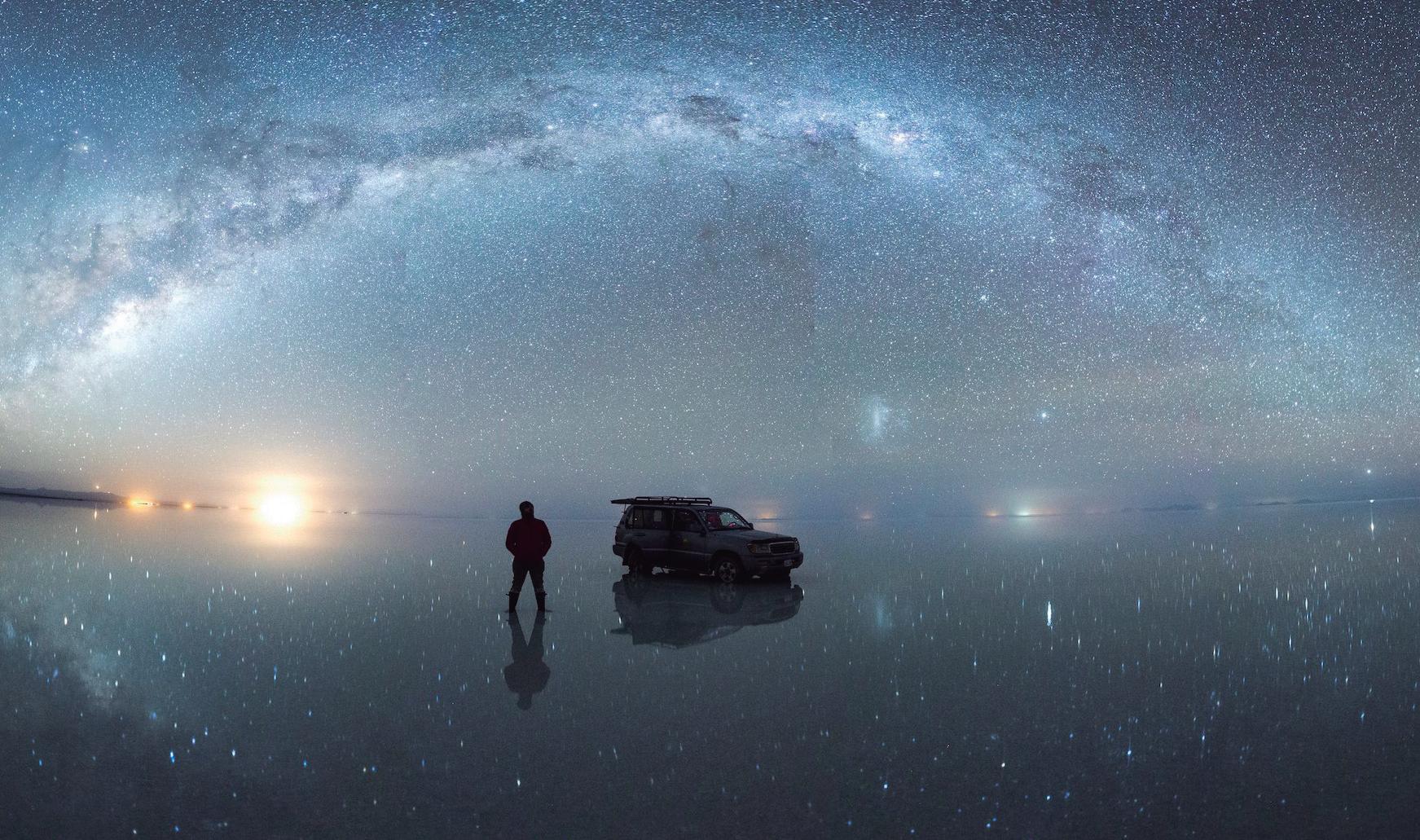
Once a show is in production we give our crew quite a lot of responsibility and encouragement and have regular meetings, online or preferably face to face in the studio to run through the work and discuss it in a wider group. We have noticed that since the pandemic and now remote working is more commonplace, artists can get very isolated and particularly the younger members of the team can miss out on one-to-one mentoring which is so important to develop skills, both on the box and with others on the team.
How do you incorporate AI-driven editing tools into your workflow, and what benefits do you see in using these technologies?
I think the jury is still out regarding AI. We currently don’t really use these tools, maybe with some re-speeds or other really simple tasks, but in terms of generating content we avoid it. There are issues, both moral and
practical around copyright and we are finding that we are having to sign waivers saying we are not using AI on some projects.
Having said that, I have used image generators to kick off some ideas for pitch concepts, the rather random nature of AI can bring things up that are so left field that I’d never come up with them myself.
I think the jury is still out regarding AI. We currently don’t really use these tools, maybe with some re-speeds or other really simple tasks, but in terms of generating content we avoid it.
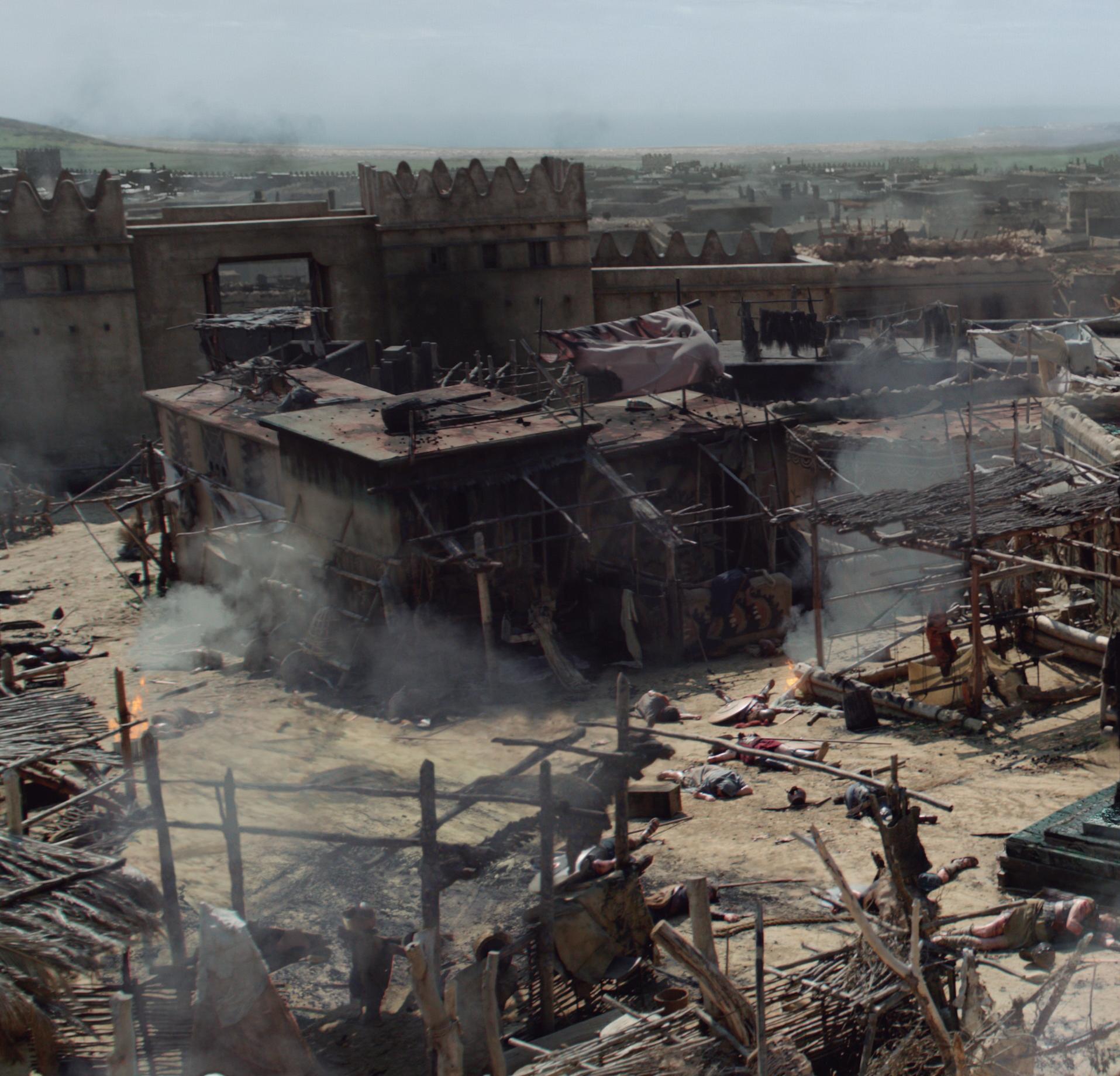
What are the most significant trends in audiovisual post-production that you have observed in recent years, and how do you see them shaping the future of the industry?
This is a tricky question. I think the
industry is struggling at the moment, the pandamic was a disaster but when we came out of lockdown and the studios and broadcasters needed content, there was an explosion of new commissions on top of the ones that had been delayed or cancelled, many new
post and VFX companies and therefore shortage of talent across the board. This bubble has deflated, if not completely burst, but then going into the strikes and a slow down in production has left companies struggling and many people sadly out of work.
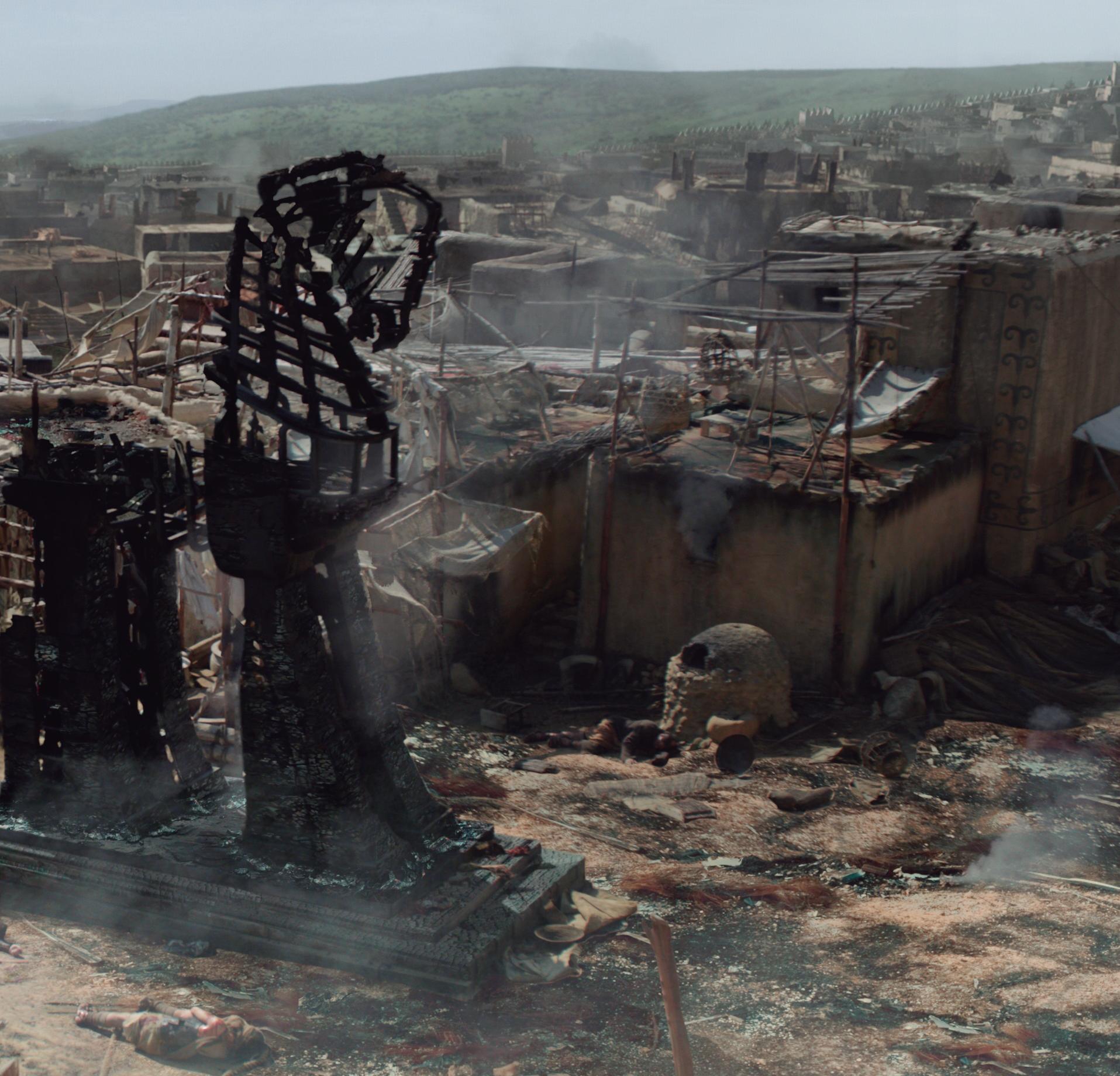
I think the industry is struggling at the moment, the pandamic was a disaster but when we came out of lockdown and the studios and broadcasters needed content, there was an explosion of new commissions on top of the ones that had been delayed or cancelled, many new post and VFX companies and therefore shortage of talent across the board.
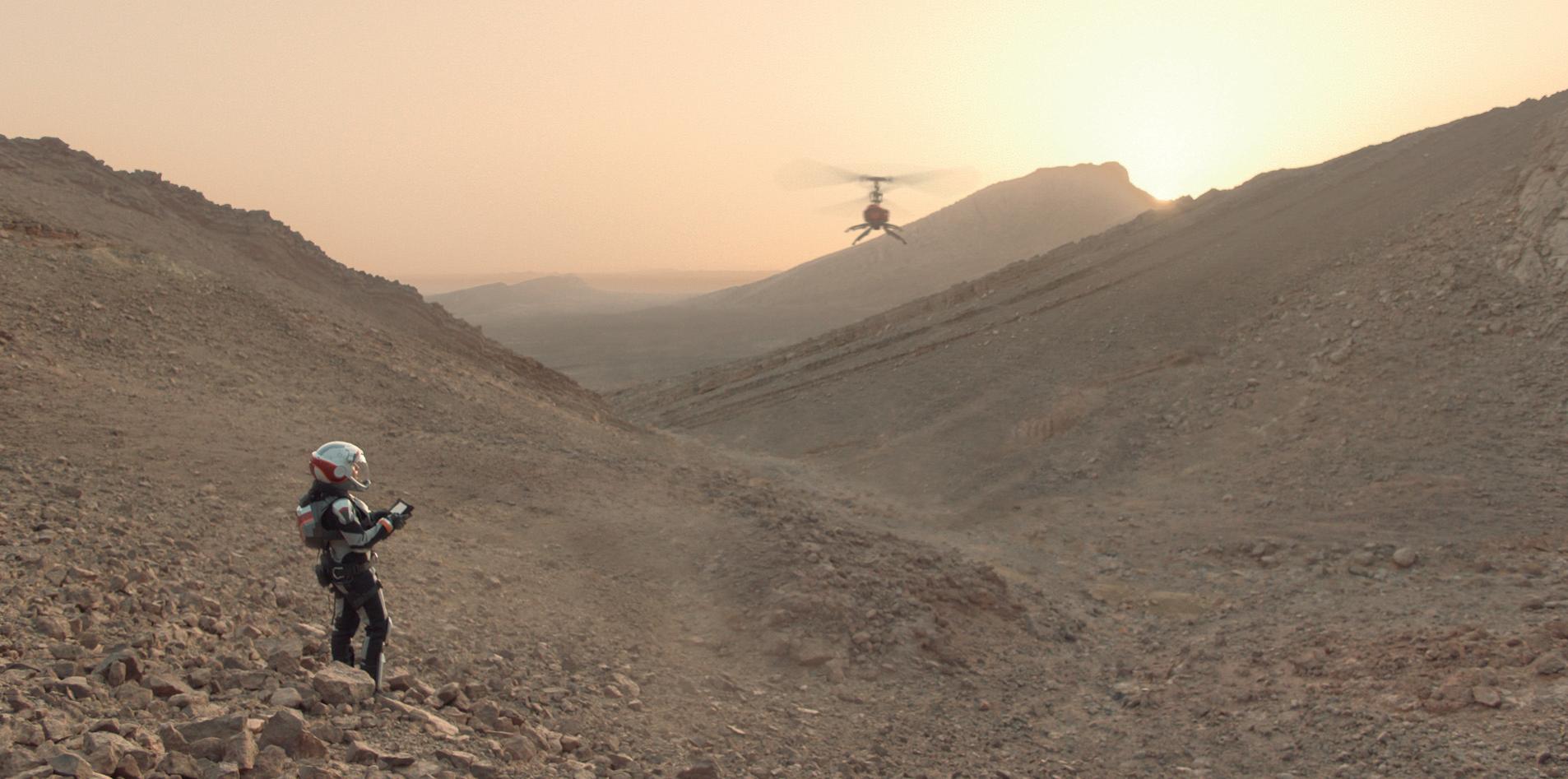
What strategies do you use to ensure collaboration and communication among team members, particularly when working on complex projects with multiple stakeholders?
It’s all to do with communication, we use Shotgrid across Lola and our clients use it to view progress and feedback. We also have daily meetings with groups on the team, it could be Production, the animation department, the Supervisors, compositing or a team across several department to chat about a particular sequence or episode.
We are lucky to have quite a few returning clients and a regular team of freelancers and contractors, so often the teams are familiar and have a relationship. Clients come
into the studio as much as possible to view shots with the team face to face.
I hate to admit it, and wouldn’t encourage it, but I’m often called in the evening or at a weekend for chat with a director or producer. Having said that, many of them have been friends for years so I can’t complain.
What upcoming projects does Lola Post Production have in the pipeline for the near future?
We have a couple of series in the pipeline, unfortunately as is common these days they are under strict NDAs so I can’t mention them by name… sorry! I can say we have a comedy series, a historical drama recon and possibly a feature film on the horizon, so a bit of everything.
How do you envision the future of post-production evolving, and what new technologies or techniques do you see becoming increasingly important in the industry?
In the 24 years that Lola has been going, I would say the industry hasn’t really changed that much. Companies and technology come and go - or evolve, but the basic process is pretty much the same. Clients tend to have bigger ambition than the budget may allow, and schedules are always an issue. I think there has been a seismic shift in terms of younger people’s viewing habits and over the coming years we will probably see very different content and viewing platforms becoming the norm.
What advice would you give to aspiring post-production professionals looking to break into the industry, and what skills or knowledge do you think are essential for success in this field?
The million dollar question! So much can be down to luck, nepotism, being in the right place at the right time, but if I could offer any advice it would be to be patient and listen. It’s unlikely you’ll be VFX Supervisor on a feature or Head of Production within
six months, whatever your parents have told you.
Obviously, there is hard work and talent involved, but be prepared to learn and gain experience and if possible get into a studio environment where you can interact and become part of a team and hopefully gat some mentoring from more senior team members. Social skills, diplomacy, talking to people and asking questions is so important – you may go into the industry with a clear idea of what you
want to do, and then fi nd another path that’s more interesting.
Personally, I like artists with Art School experience, we can teach the software, but having a good eye and ideas is just as important. There are some great courses out there, depending on what you want to do, and many post and VFX companies are involved with the colleges and actively look to cream off the best students. A runner is usually a good starting position, and remember a good CV with no spelling mistakes or bad grammar!
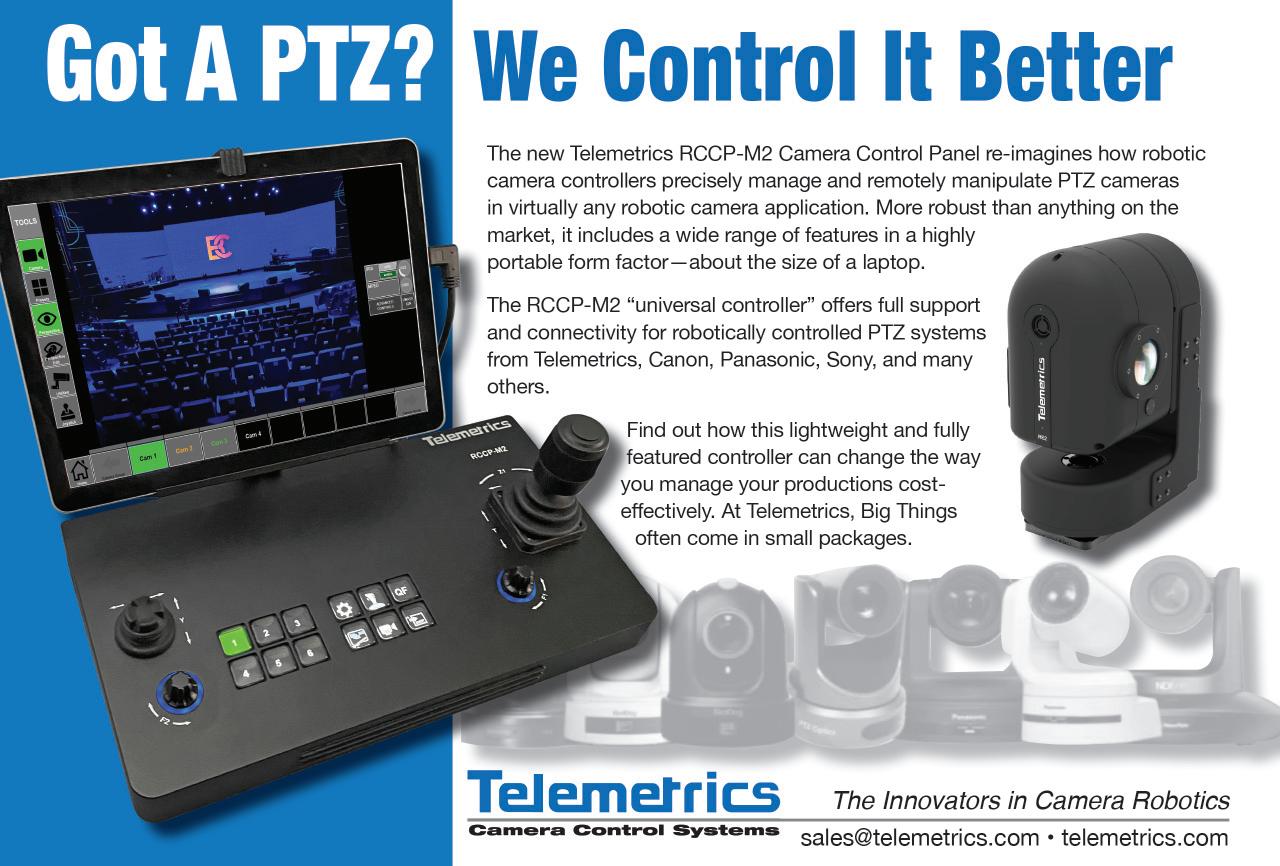
PTZ ProAV and Broadcast solution for live productions and immersive VR
Lab test conducted by Carlos Medina, Expert and Advisor in Audiovisual Technology

There is no doubt that PTZ cameras are a truly interesting solution for carrying out recorded and/or live audiovisual productions, live broadcasts and/or broadcasts through streaming.
A PTZ camera has such generic designation by the acronym for terms of Pan-Tilt-Zoom. PAN is the panoramic movement of the camera body horizontally (from left to right or vice versa), on its own central axis and without any physical displacement of the camera. TILT shares the same features, but it is the movement of the camera body vertically (from top to bottom or vice versa). And ZOOM is the internal movement of the lenses within the camera optics that allows us to have different focal lengths without changing the lens(es), being capable of switching from a wide angle to a normal focal length or to a telephoto lens (that is, having different combinations that depend on the manufacturer’s type and design of the optics in the video field).
In today’s audiovisual landscape, PTZs are much more than optical and physical camera movements. Manufacturers such as Telycam are providing constant innovations and more comprehensive solutions for this type of camera. This allows us to indicate that the PTZs inherent to the ProAV field
and the audiovisual broadcast sector have in the past left the idea that this type of cameras were only somewhat more advanced cameras to make a webcam and/or for security and video surveillance environments.
The case that leads us to write this article now is the new PTZ EXPLORE SE, together with the PTZ V-Joy camera control panel. Both pieces of equipment are from Telycam Technology Co., Ltd, a company based in Shenzhen - China, which has since 2014 been a world reference in the development and manufacture of UHD and FHD PTZ cameras for videoconferencing and live broadcasts.
The PTZ EXPLORE SE camera was showcased at the IBC Show 2023 (International Broadcasting Convention - RAI Amsterdam), being Telycam’s most advanced device. This model features a powerful 1/1.8” Sony CMOS sensor with 9MP resolution and an impressive 30x optical zoom with a horizontal field of view from 60° (Wide) to 2° (Tele).
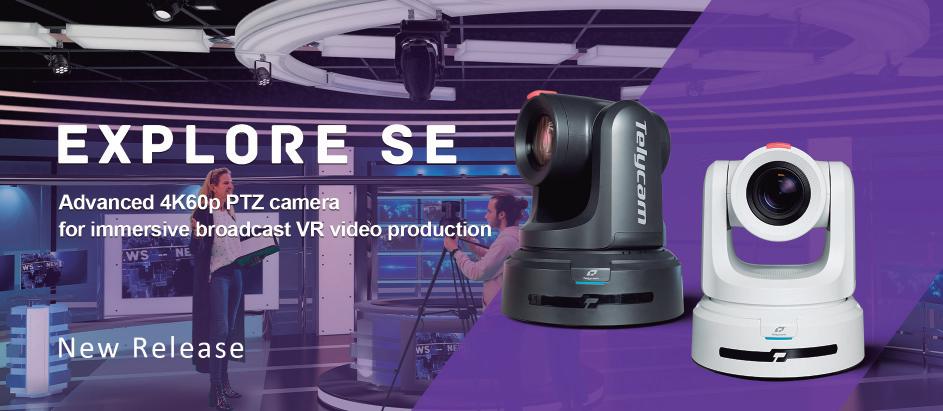
This camera comes equipped with a 6.91 mm (f: 1.35) to 214.64 mm (f: 4.6) focal length lens. Its technical data are: ±170° horizontal pan operating range with a pan operating speed of 0.1° to 80°/s; and -90° to 90° vertical tilt operating range with a tilt operating speed of 0.1° to 60°/s.
The item’s build is robust, with a minimalist design in shape and with the possibility of choosing the finishing color between white or black. This PTZ weighs 4.6 kg with dimensions L= 232.5mm x W=264mm x H=269mm, which conveys the idea that it is a large camera within the broad range of PTZs on the market.
The main reason for its size lies inside the camera, which features a state-of-the-art image processor to deliver stunning ultrahigh-definition (UHD) images, enabling to capture realistic colors, perform very fast handling and movement operations, such as focus and the auto-tracking function. In addition to a rear connection panel with a multitude of video, audio and communication output options to cater ows depending on the
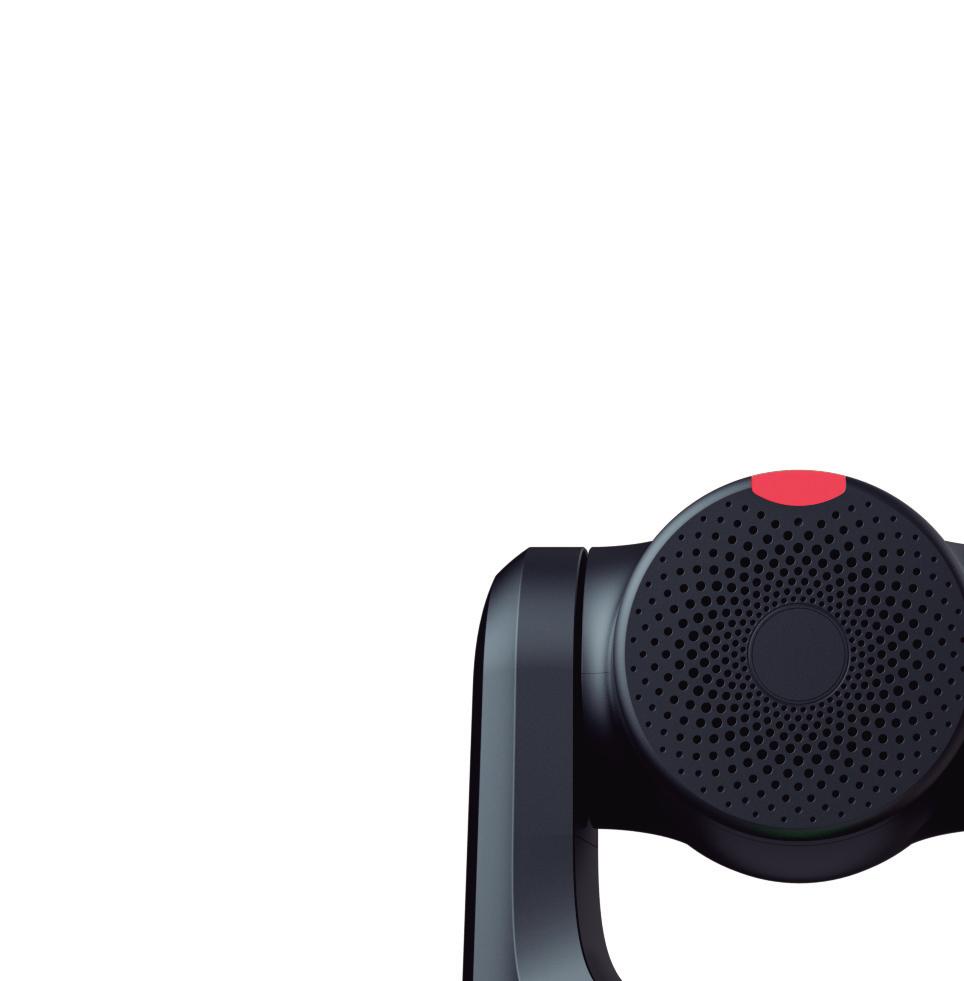
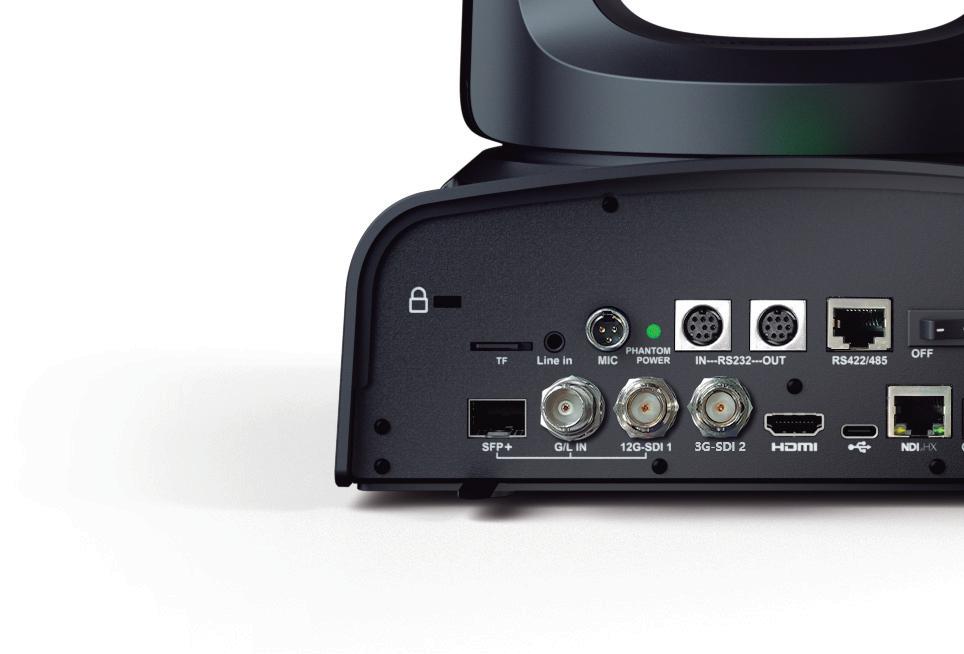
Therefore, together with the powerful 30x optical zoom and the UHD (3840 x 2160) 60p native resolution, three other features that make this equipment a differentiating value compared to other solutions and manufacturers must be highlighted:
• FreeD technology integration. The FreeD protocol, also known as “Free Dimensional Video”, is a communication standard used in video production, specifically for broadcasting and live events. This streamlines visual integration and synchronization of multiple video sources, including cameras and augmented reality (AR) graphics, thus resulting in immersive and interactive 3D viewing experiences. Telycam includes this protocol in this model, thus allowing accurate tracking of camera positions, orientations and lens parameters in real time, which is decisive for the integration of virtual graphics with the images captured by the PTZ.
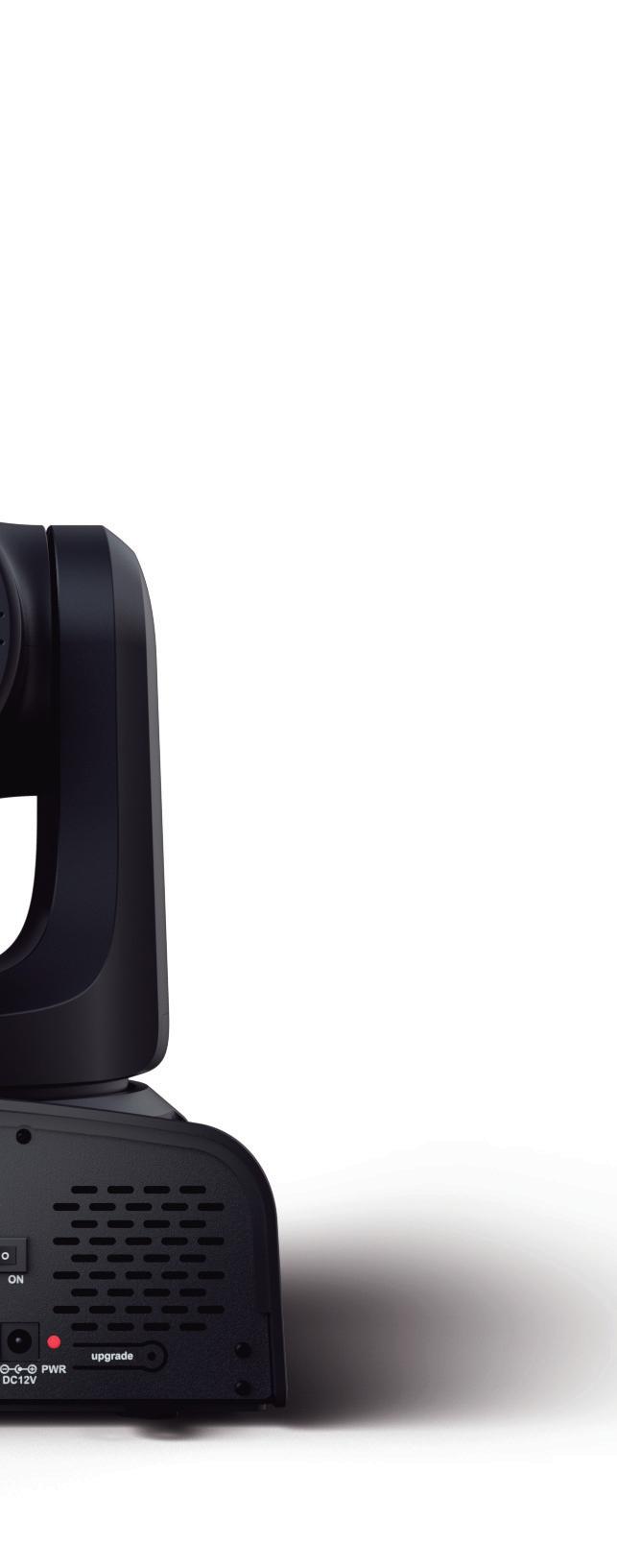
In addition to a rear connection with a multitude of video, audio and communication output to cater to diverse workflows on the professional environment. the im Corre the so scena reality rende the PT PTZ E 12G-S Studio Unrea Mult conn wide interf









Correct communication between the software specialized in virtual scenarios, 3D graphics, augmented reality, generation of keys, tracking and rendering, among other functions, and the PTZ camera is necessary. Telycam’s PTZ EXPLORE SE, via UDP, NDI|HX and 12G-SDI integrates with Vizrt Viz Virtual Studio, Brainstorm solutions and the Unreal Engine platform.




Multiple and innovative connectivity. PTZ EXPLORE SE offers a wide range of possibilities in I/O (In/Out) interfaces:

– RS232 I/O Control Port.
– RJ45 - RS422/485.
– RJ45 NDI®/NDI®|HX: Main Stream 3840x2160 1920x1080 1280x720 1024x576p and Sub Stream: 640x360p.
– USB type C: which allows sharing NV12 (1920x1080P5, 1280x720P15, 1024x576P25, 800x448P30); YUYV (1920x1080P5, 1280x720P15, 1024x576P25, 800x448P30); MJPG (3840x2160P30, 1920x1080P60, 1280x720P60, 1024x576P60, 800x448P60); H264/H265 (3840x2160P30, 1920x1080P60, 1280x720P60, 1024x576P60, 800x448P60).
– HDMI2.0 featuring a maximum video output of UHD 3840x2160 60p, 1920x1080 60p and 1920x1080 60i with frame rate changes.
– 3G-SDI BNC offering 1920x1080 60p and 1280x720 60p video outputs at different frame rates.
– BNC 12G-SDI that allows maximum video output formats from UHD 3840x2160 60p up to UHD 3840x2160 23.98p; and even 1920x1080 60p and 1920x1080 60i, with the possibility of changes in frame rate.
– SFP+ connectivity: This technology offers exceptional data transfer speeds and is well suited for long cabling distances, thus making it the perfect choice for large productions, outdoor events
or large stages. It has redundancy options that allow reliability, security and immunity to interference, therefore making it a solid solution for various environments.
Its greatest virtue is the scalability of SFP+ connectivity to changing bandwidth demands, thus ensuring smooth integration: from the highest quality offered by 3840x2160p (60/50/30/25/29.97/24/23.98), to FHD resolutions: 1920x1080p (60/50/30/2 5/59.94/29.97/24/23.98), 1920x1080i (60/50/59.94) and 1280x720p (60/50/30/25/59.94/29.97).
– Slots for MicroSD cards. One slot dedicated to firmware updates and another slot for local recording, so you can get an instant backup during network issues or allow you to have the material as if it were a mastered camera.
With regard to IP streaming, the video is encoded in H.264/H.265 with variable (VBR) and constant (CBR) bitrate control, offering a bitrate range of 1024Kbps up to 61,440Kbps, a maximum network speed of 1000M and under the most widely implemented communication protocols in the audiovisual sector: NDI®, NDI®|HX, HTTP, SRT, RTSP, RTMP, ONVIF, over VISCA IP (TCP&UDP), VISCA, P/D.
• Professional-class audio support. PTZ EXPLORE SE has a 3.5 mm stereo input line and a Balanced Mini XLR compatible with Phantom power.




Handling, configuration and operation of a Telycam EXPLORE SE PTZ can be done from a remote control (an IR Remote Controller that comes with the equipment) for menu settings and for the most basic uses, by downloading Telycam’s own free control software or through Telycam WebUI. But what works best for a more dynamic response is with the PTZ V-Joy/V-Joy+ camera control panel or with the new PTZ V-Joy+ AT.

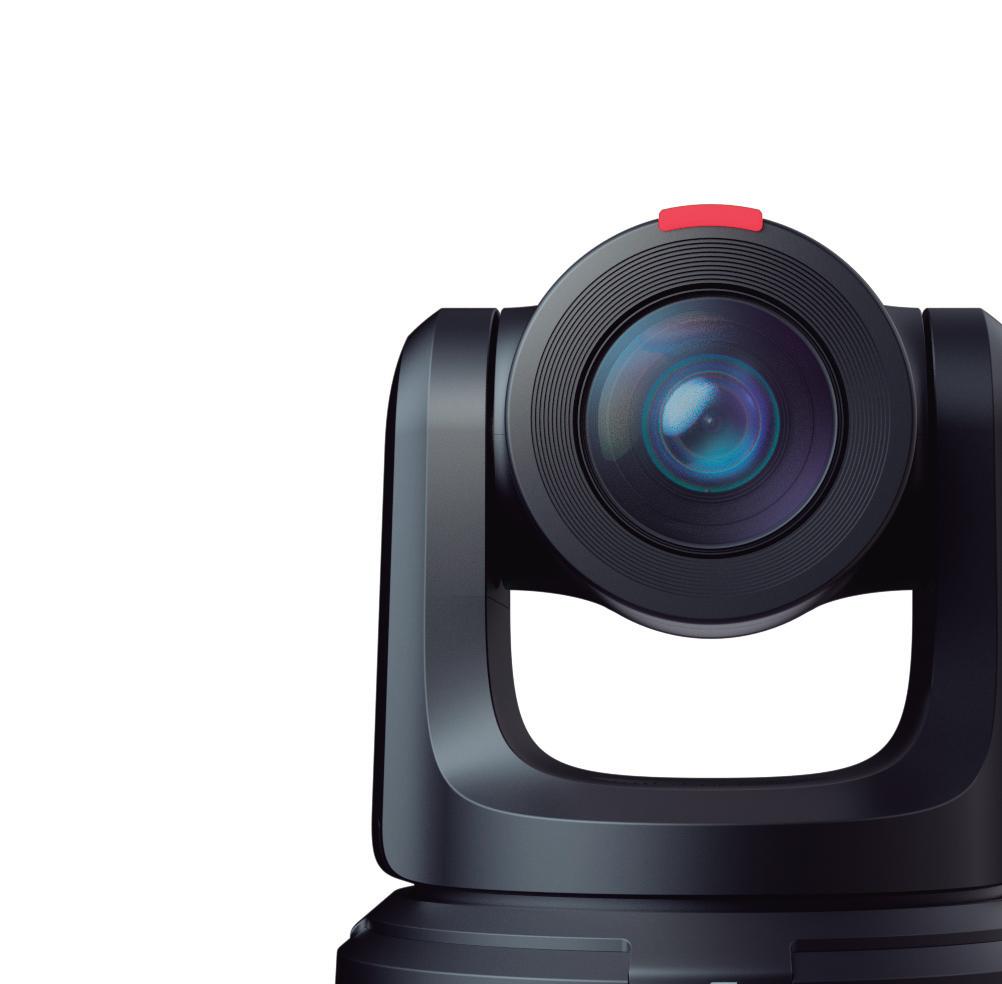


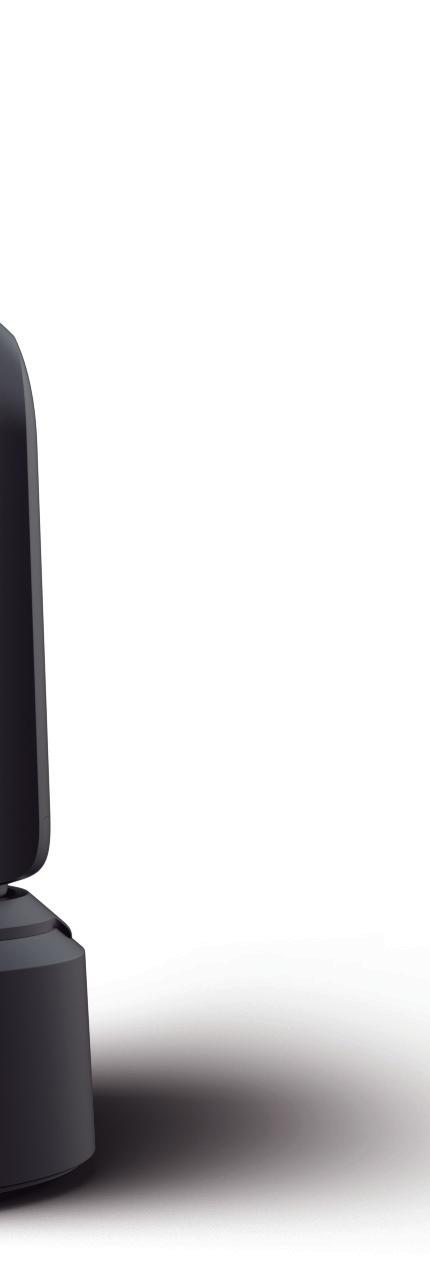
The menus presented by the PTZ EXPLORE SE are quite complete according to the following items:


• SYSTEM, where we can configure the communication protocol established in the audiovisual production workflow; also the language for the menus and activate the tally or phantom feed for audio.
• QUALITY is where we can modify the parameters that affect the most artistic aspects of the resulting image, such as Sharpness, Contrast, Saturation, Gamma and/or Image Style (full, user, normal color).
• EXPOSURE, allowing to choose between a manual or auto exposure mode. Therefore, we can change the parameters for the shutter (1/38 to 1/10,000), iris (f:1.8 to f:14 and closed) and gain ( 0db to 30db). Also allows to activate the Wide Dynamic mode and level and BLC (Back Light Compensation) to compensate the backlight for our images.
• IMAGE is the menu where we adjust the White Balance mode (auto, indoor, outdoor, push, ATW, manual or the color temperature (CT) adjustable between 2,500ºK and 9,900ºK). Other options to tweak are anti-flicker (off, 50Hz, 60Hz), digital zoom and/or Focus Near Limit (1.5m to 10m).
• RESET/INFO allows various resets (System, Camera, PAN, TILT or ALL) and gives us information about the PTZ model and version. on of done e pment) basic n st for e nel or e the ed in ow;also

• PTZ SETTINGS, for access to the configuration of the set PTZ values (presets) or to change direction for PAN and TILT and ZOOM speed, among others.
• VIDEO covers everything related to traditional video I/O based on HDMI and SDI (size, frame rate... worth noting is the color space configuration of the HDMI output in YUV444 or RGB).
• IP SETTINGS (DHCP, Main IP, Full NDI IP, Mask, Gateway, DNS).
• TRACKING (Auto, Target Location, Target Scaling, Free-D Serial ID, Free-D Serial Enable).

Last, PTZ EXPLORE SE is a spectacular, silent PTZ camera with a built-in automatic tracking function based on AI (face detection, skeleton detection and route tracking) which facilitates capture operations. We would also like to share other features such as Genlock functionality for complex live production configurations, the FHD cropping function (3G-SDI) for the UHD being broadcast. It supports Tally, Daisy Chain connectivity and simultaneous output from traditional SDI and HDMI video streaming and from IP (NDI / NDIHX).
This equipment is powered by DC 12V or by POE++ (IEEE802.3bt) with an on/off switch.
Since we have been allowed to test the operation of this PTZ EXPLORE SE model
with a PTZ control panel by Telycam itself, let’s learn a bit more about this panel.
Telycam presents three panel models: PTZ V-Joy/V-Joy +, or with the new PTZ V-Joy AT. These control panels are perfectly configured to integrate into the workflow of the ProAV and broadcast environment by supporting multiple IP and Serial protocols (NDI®, NDI®|HX, VISCA, ONVIF, PELCO P/D, RS232, RS422, RS485...).
It is very easy both to get hold of the equipment and of the operation of the PTZ cameras, thus allowing you to work with quick access to 7 cameras, with support for the the daisy chain function. The front panel features a 3.12-inch OLED 256x64 pixels LCD Screen, which displays camera setup details and status control.

In the area below the LCD Screen we find all the shortcuts for managing the panel control, such as:
• 7 buttons for allocation of quick access assignment from camera 1 to 7.
• 3 dial switches or knobs, the first one for modifying Values and RGain, the second for Brignt and BGain and the third one for Focus and Gain settings.
• 15 buttons with specific functions such as AE Mode, WB Mode, AF/MF, PUSH/ FOCUS... of which 4 buttons have a double functionality (by pressing the SHIFT key): SHARPNESS/PRESET SPEED; WDR/PT SPEED; CONTRAST/Z SPEED and SATURATION/ZOOM. Finally, we highlight the HOME button and the MENU button (which gives us access to the menus of the PTZ EXPLORE SE).

• 12 essential numerical buttons in order to set, call and clear the different camera positions (PTZ), thus allowing a total of 128 presets configured by the panel operator and according to the needs of the relevant audiovisual production.
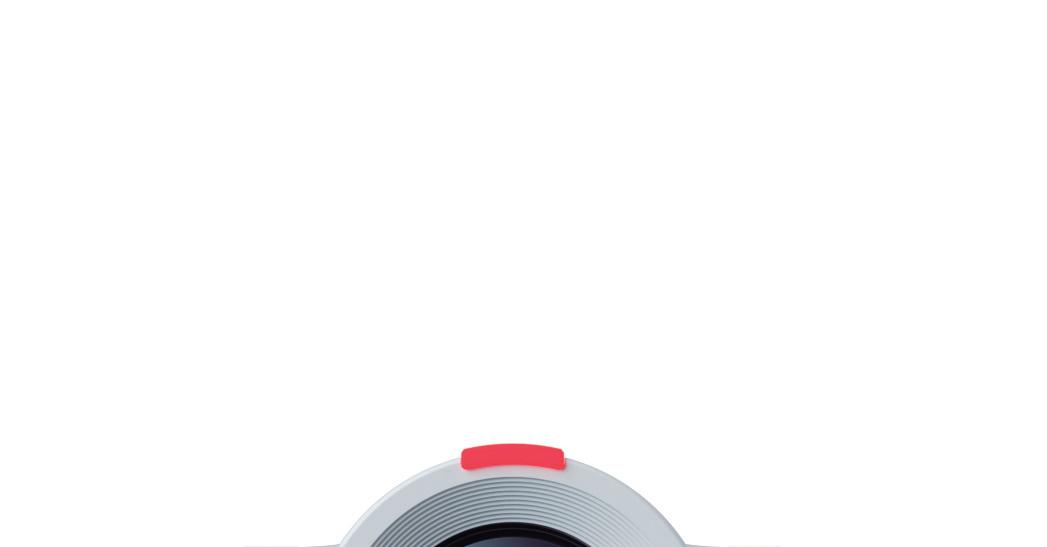
• 1 four-dimensional joystick, an essential element in any PTZ control panel, since it allows us to respond quickly to PAN, TILT and ZOOM movements. This joystick also provides access to navigate the menu and to change parameters for each specific item.



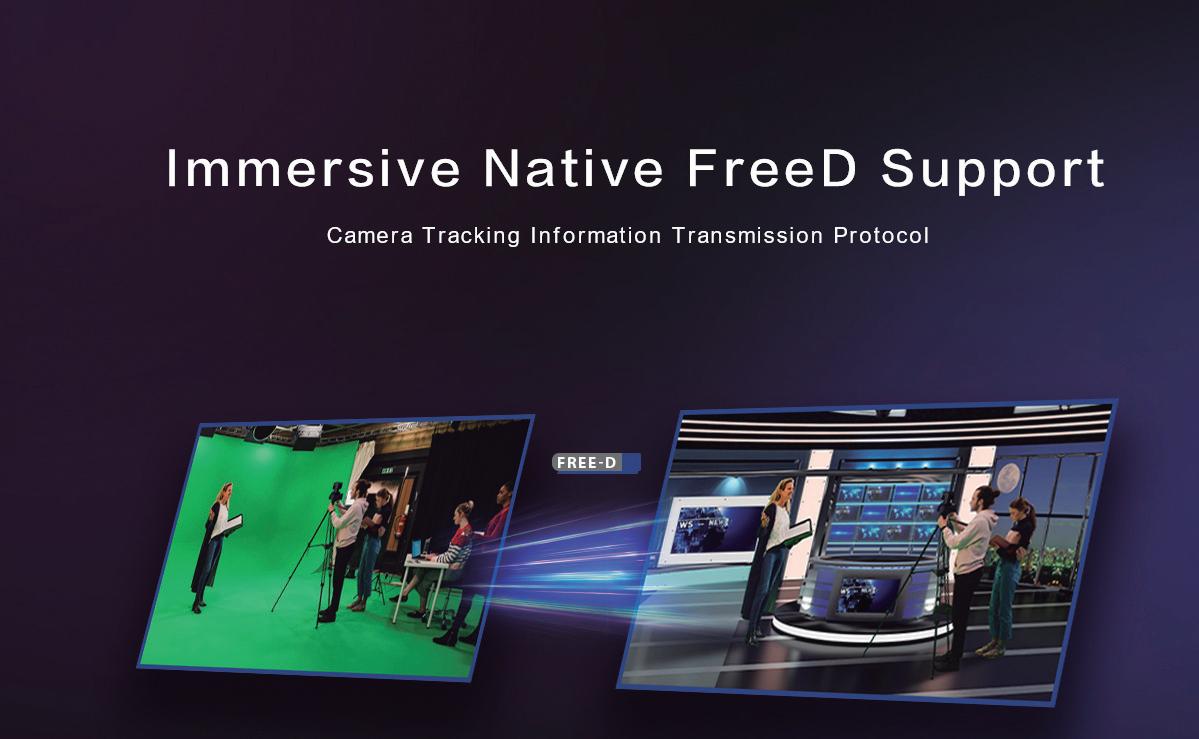

A menu comprising 4 items (System Setting, Camera Setting, PTZ Setting and Password Setting), which are the settings offered by the PTZ V-Joy/V-Joy+ concerning configuration of the control panel itself.
The equipment has a standard power supply voltage of 12 V DC and the rated current is 1 A or through IP RJ45 POE (IEEE802.3af).
From our point of view, the PTZ V-Joy/VJoy+ control panels or the new PTZ V-Joy AT still have an enormous room for growth since today they are excessively simple and, in the absence of some faster and more agile shortcuts, with the sole aim of providing immediate response in audiovisual productions of pure live broadcasts or coverage of live events. In addition, the languages of the menu interface are only Chinese and English.
Finally, PTZs are on par with studio cameras, EFP cameras and/or ENG
(Electronic News Gathering) cameras within the ProAV sector and the broadcast environment. The news regarding the beginnings in the use of PTZ in the television sector is long gone (in Spain, it dates back to 2000 with the reality program Big Brother Edition One -GH 1-, by producers Zeppelin TV); currently, those PTZ cameras with greater advances are ever so present in concert halls, football stadiums and other sport events, theaters and stage spaces, multipurpose classrooms in universities and training centers, etc.
Telycam has been, is, and will be a reference in providing audiovisual equipment professionals -specifically PTZ operatorswith the best technical features, competitive prices and easy-to handle/operate devices. An example of this are these Telycam equipment items: the new PTZ EXPLORE SE together with the PTZ V-JOY camera control panel.
